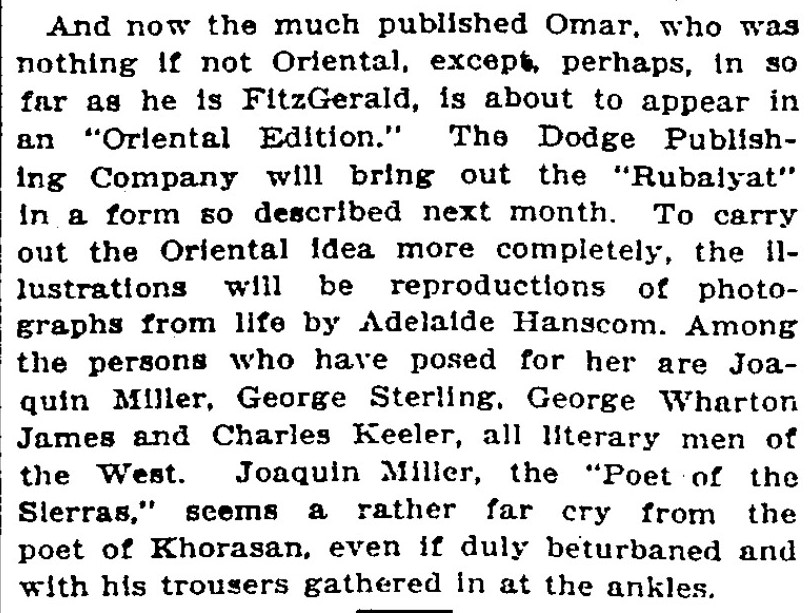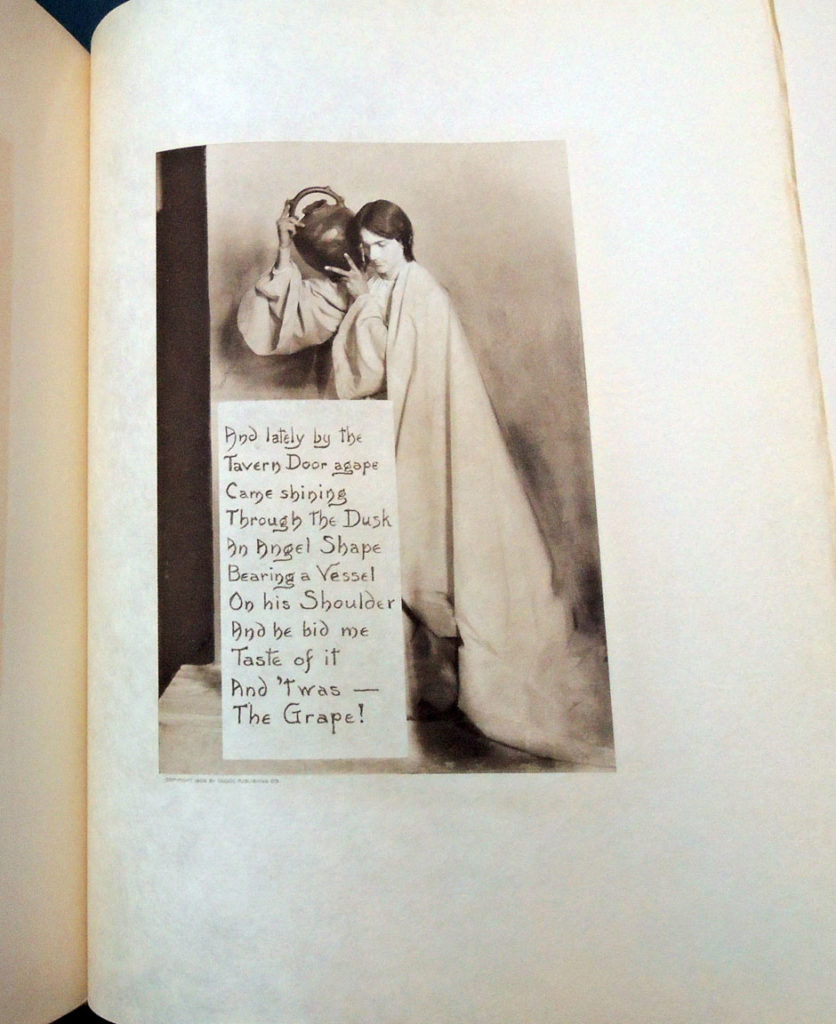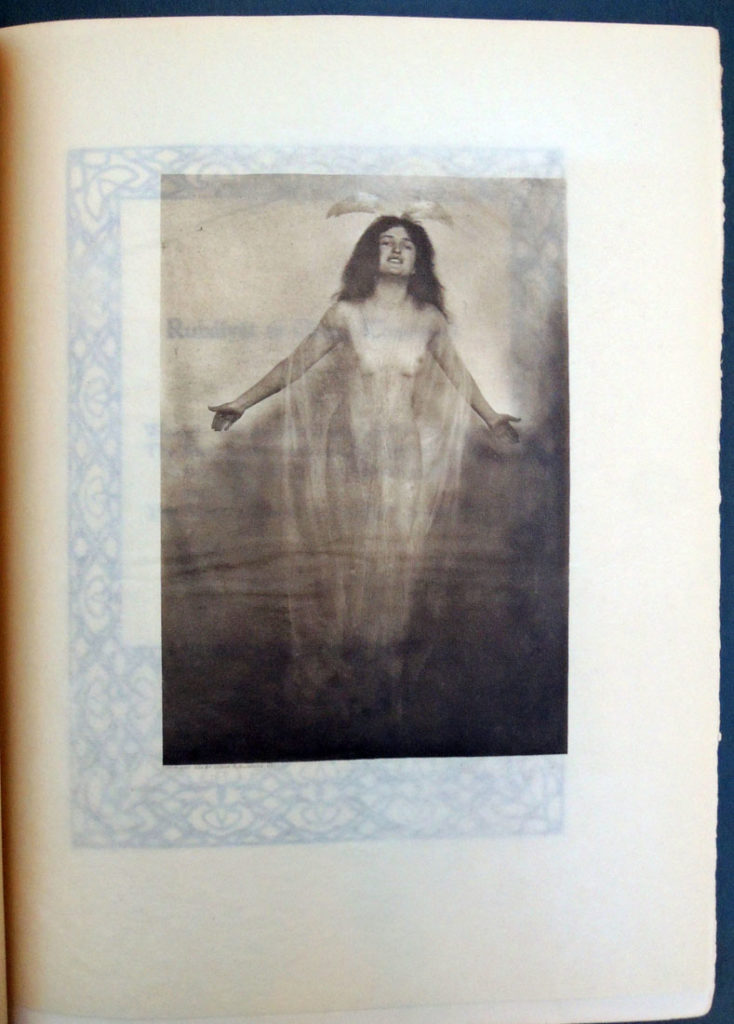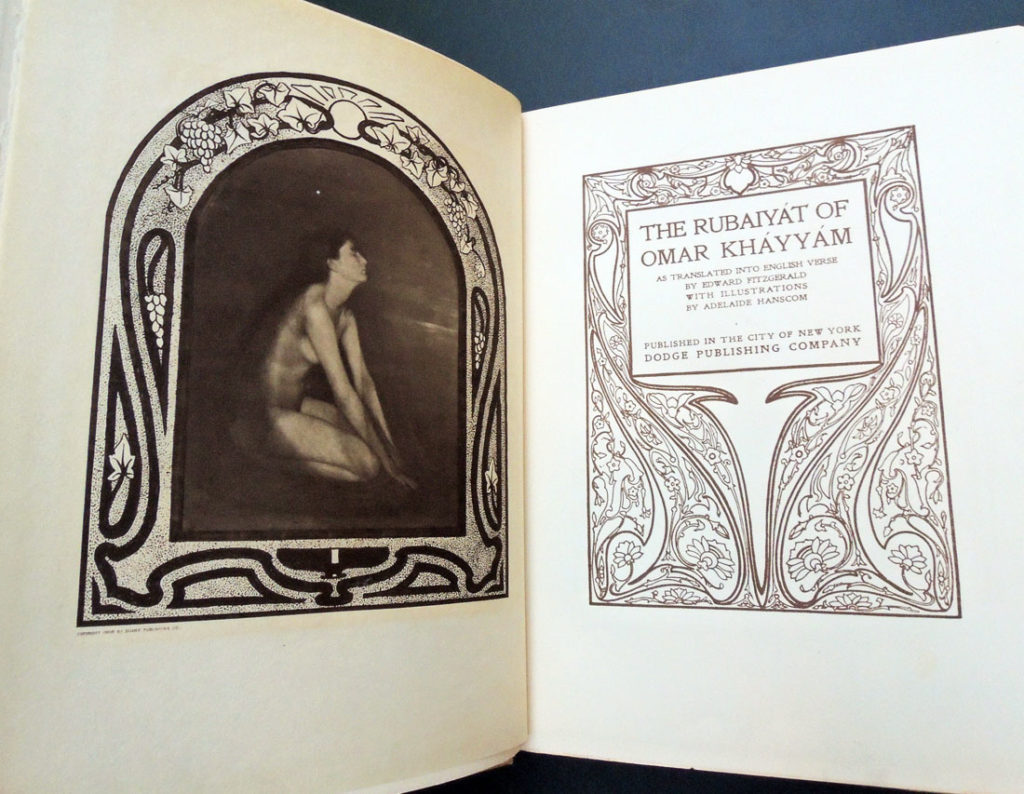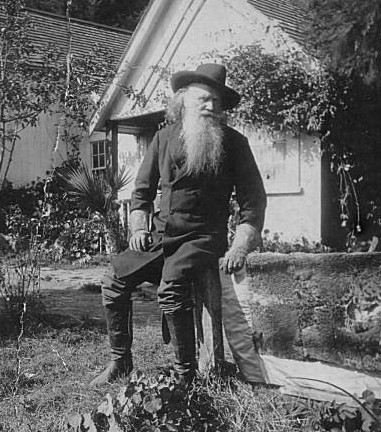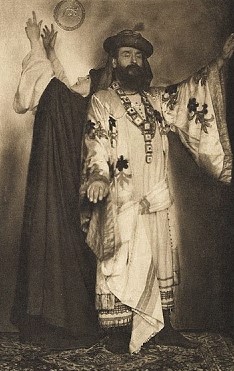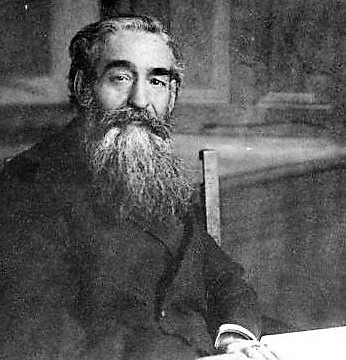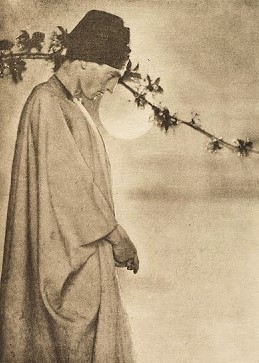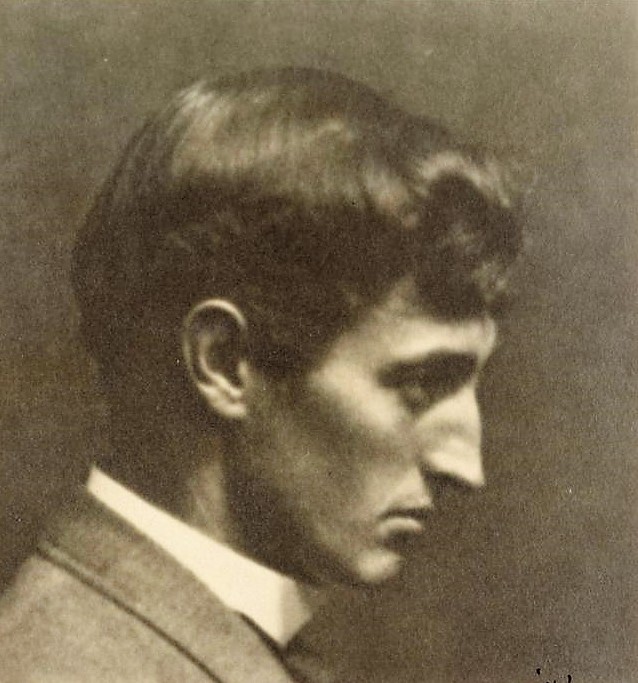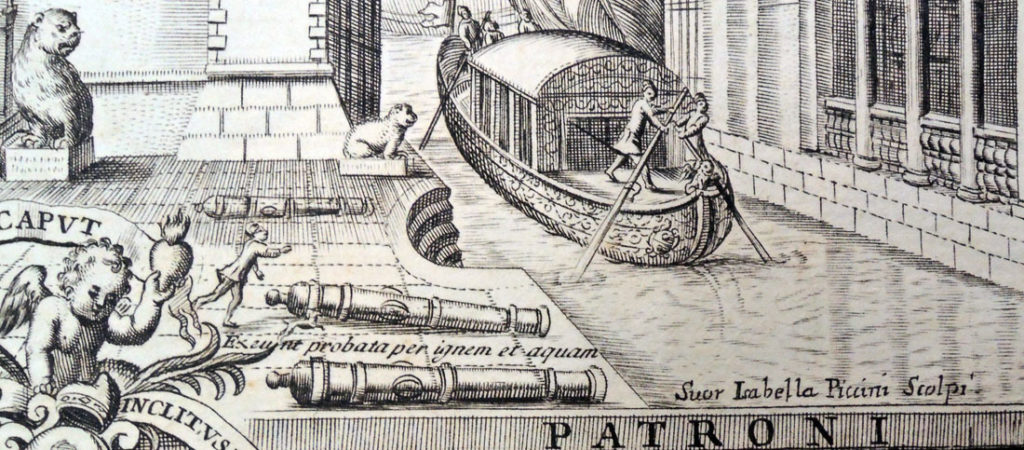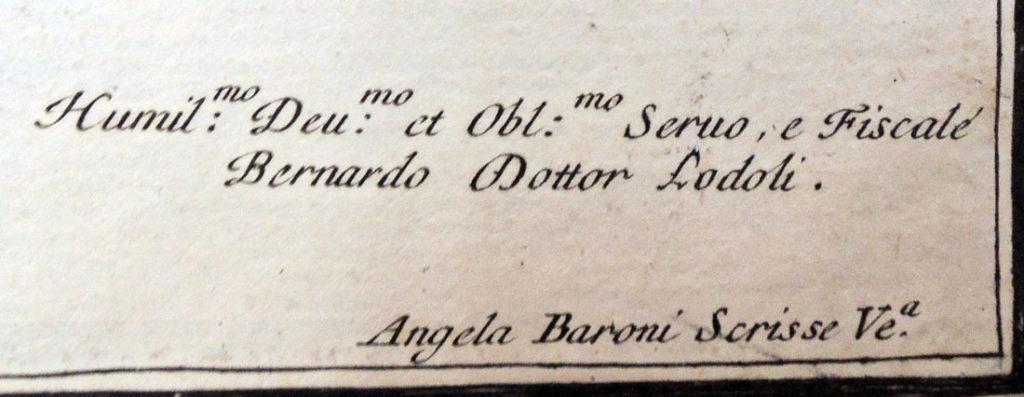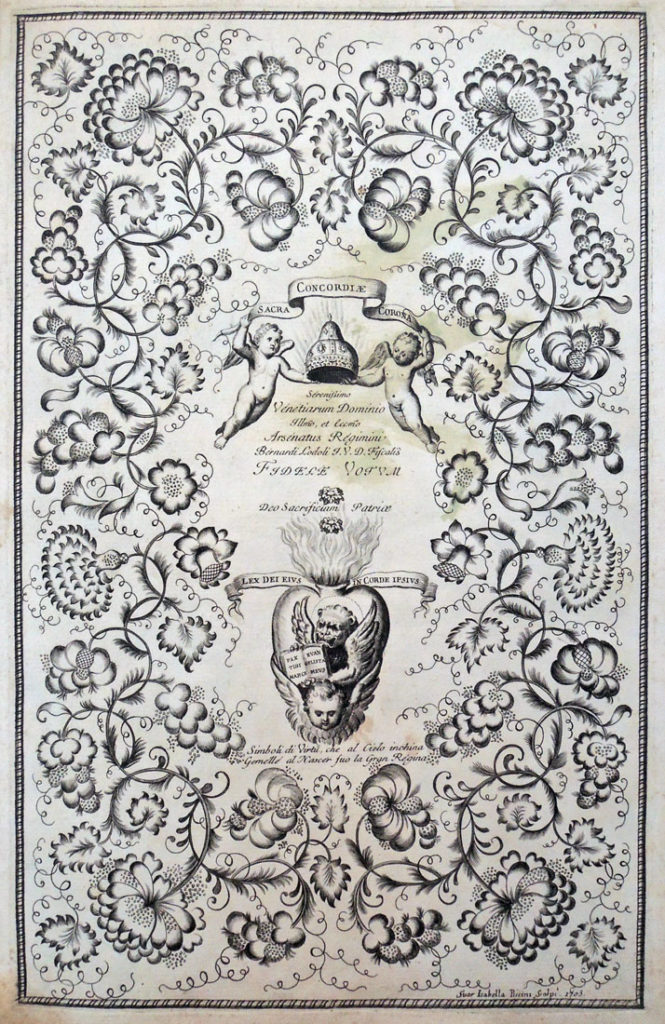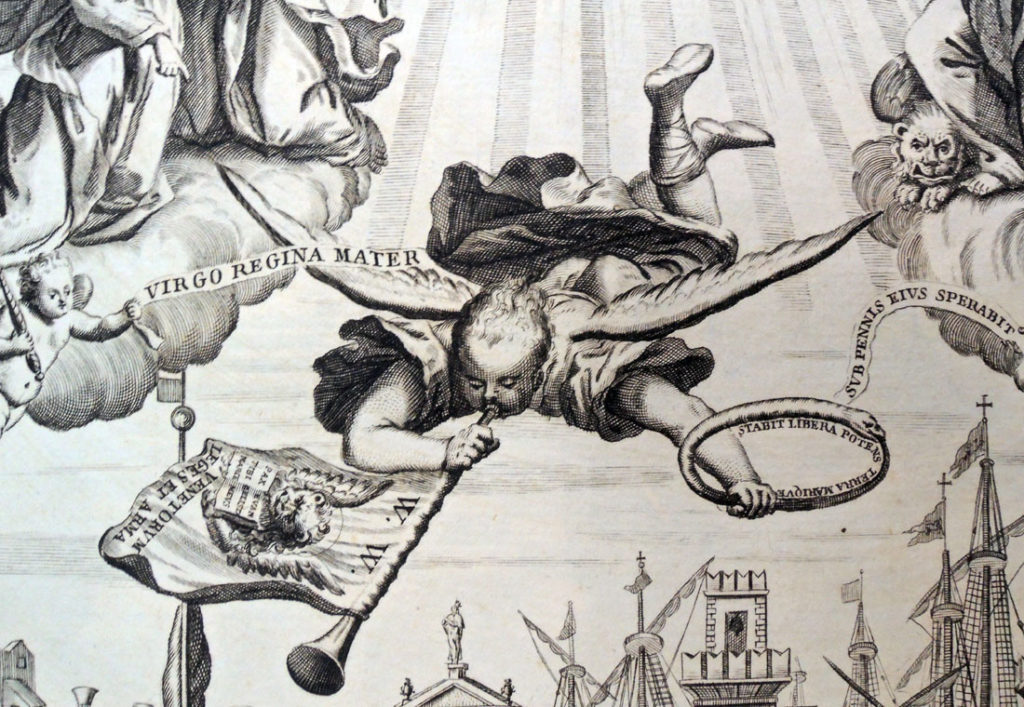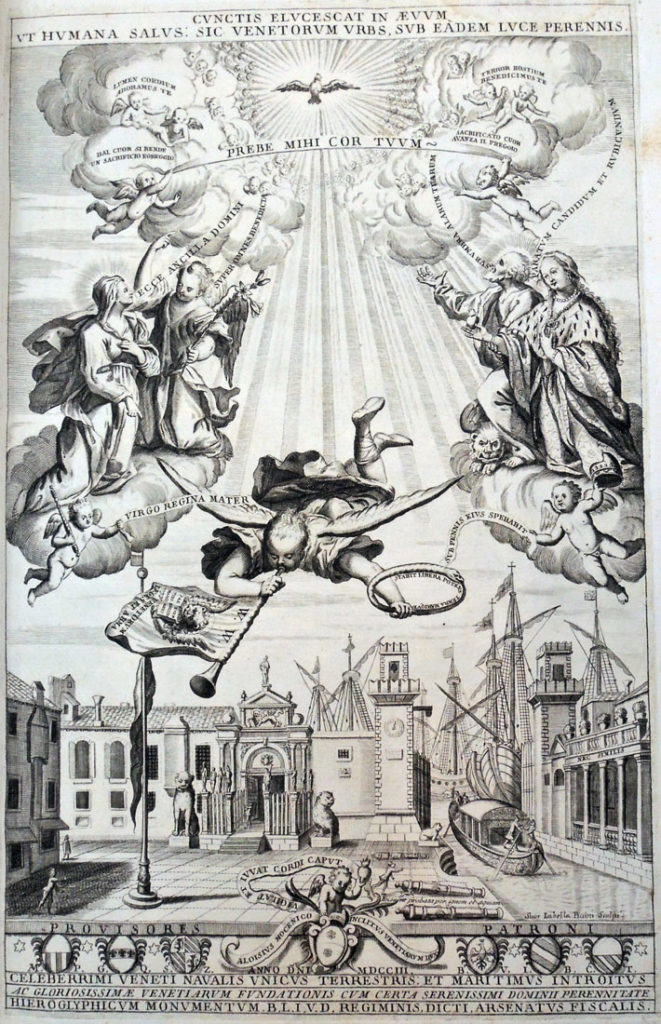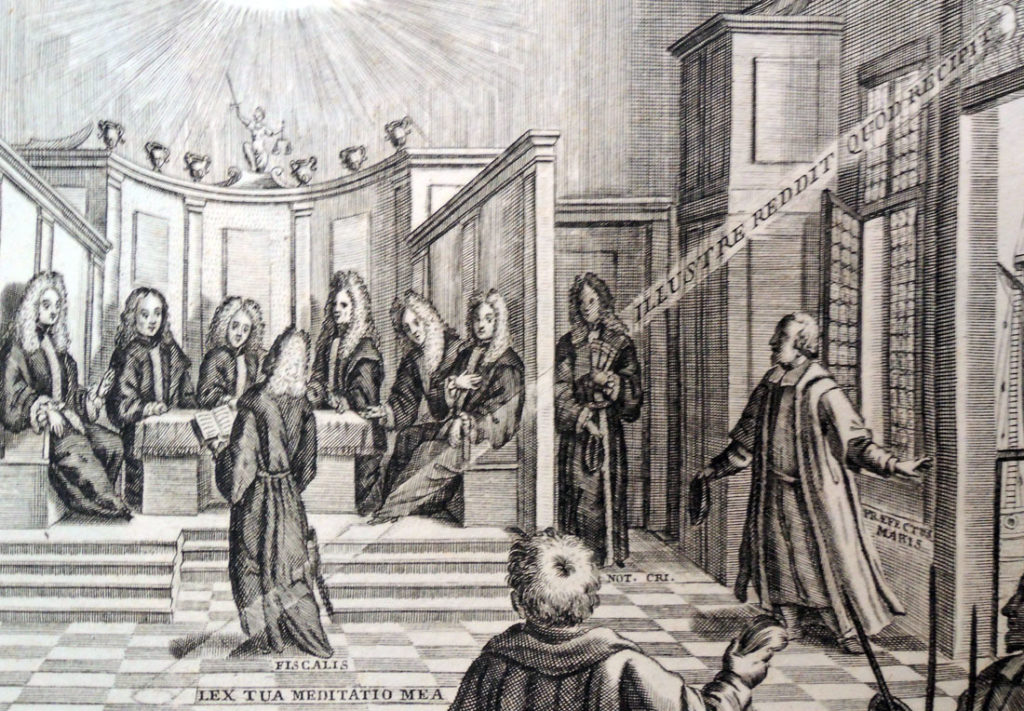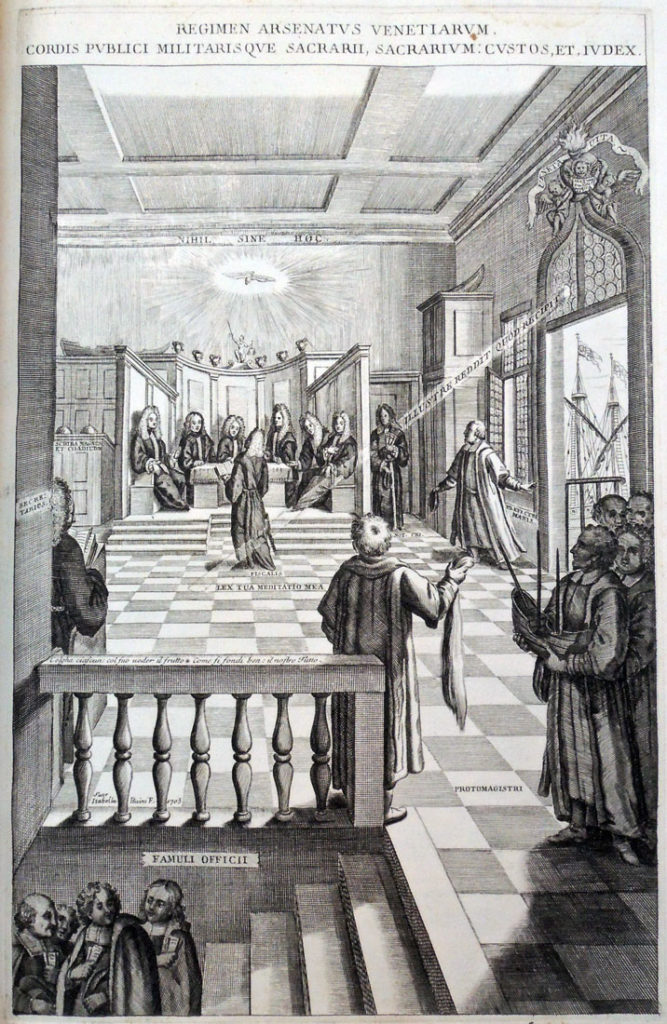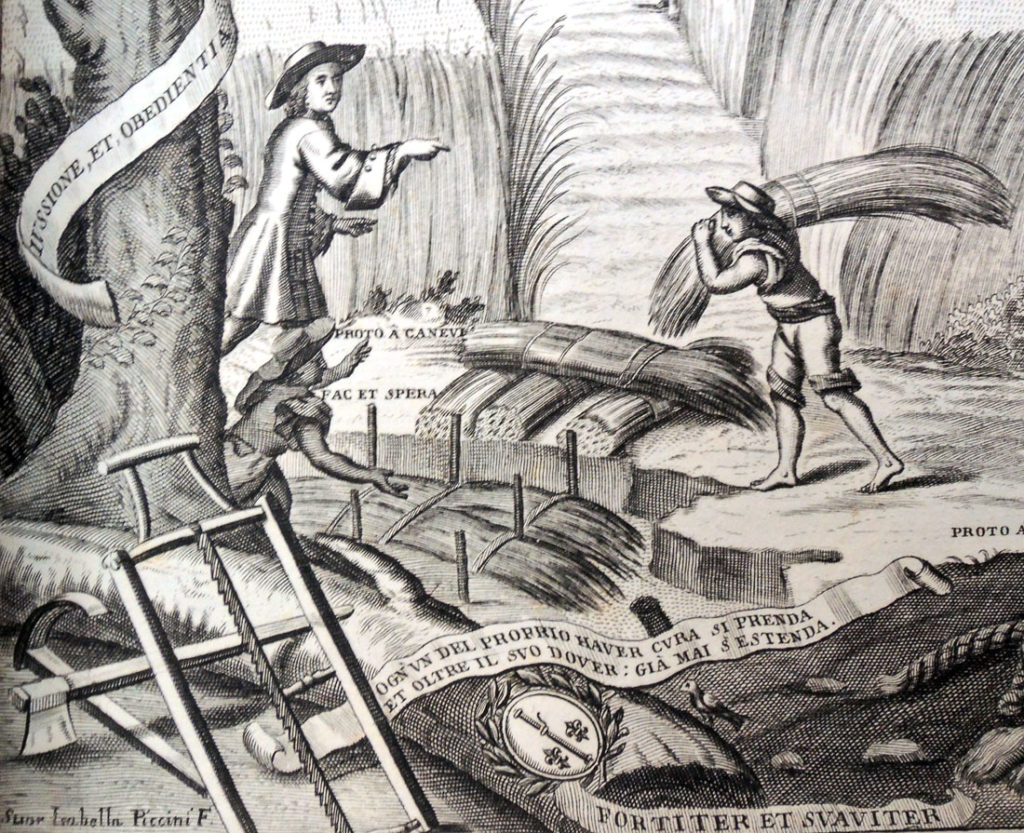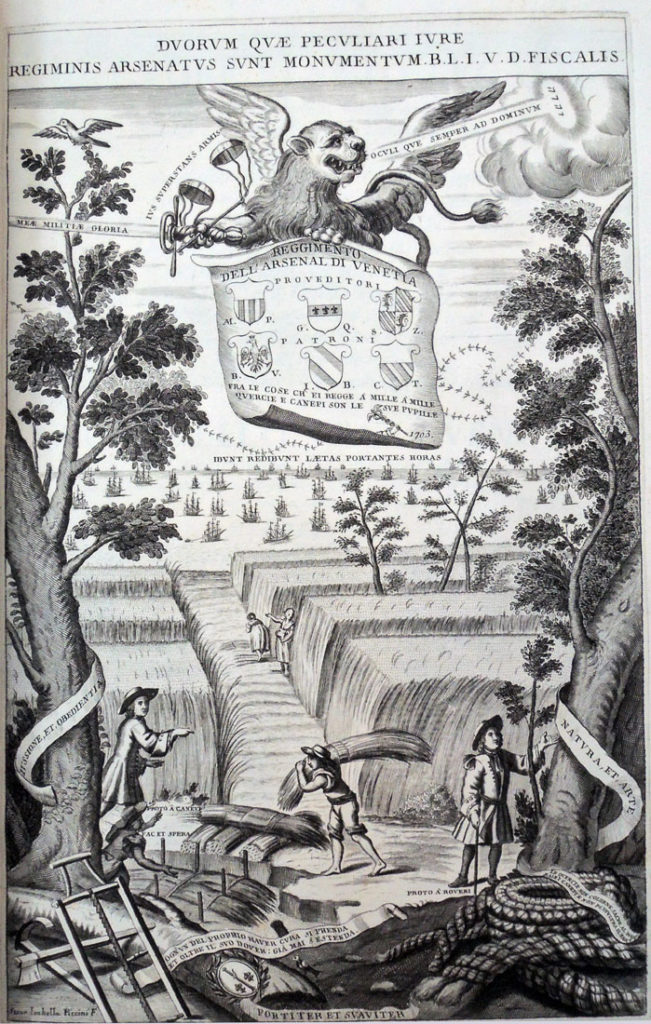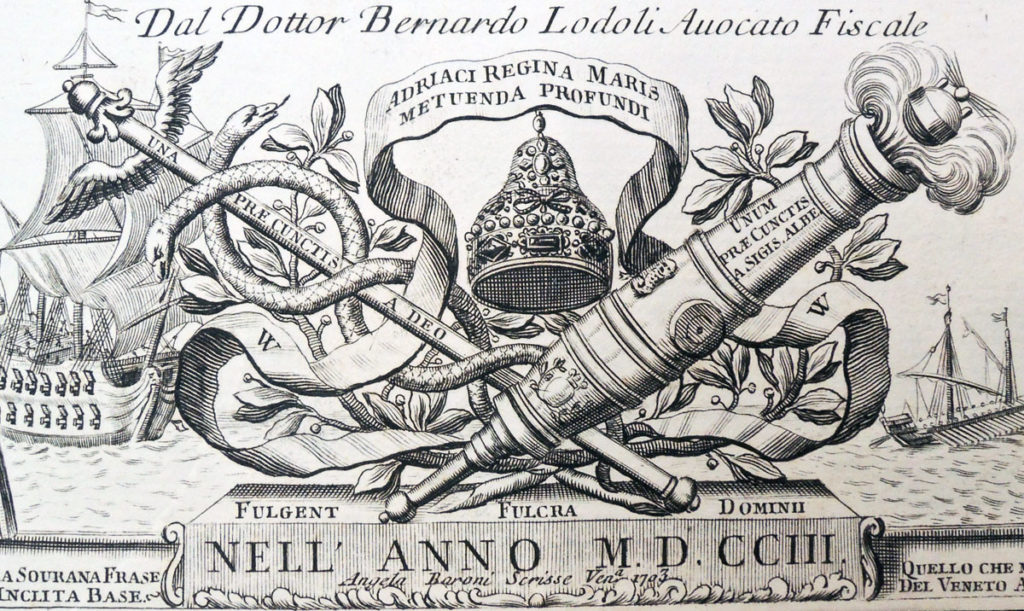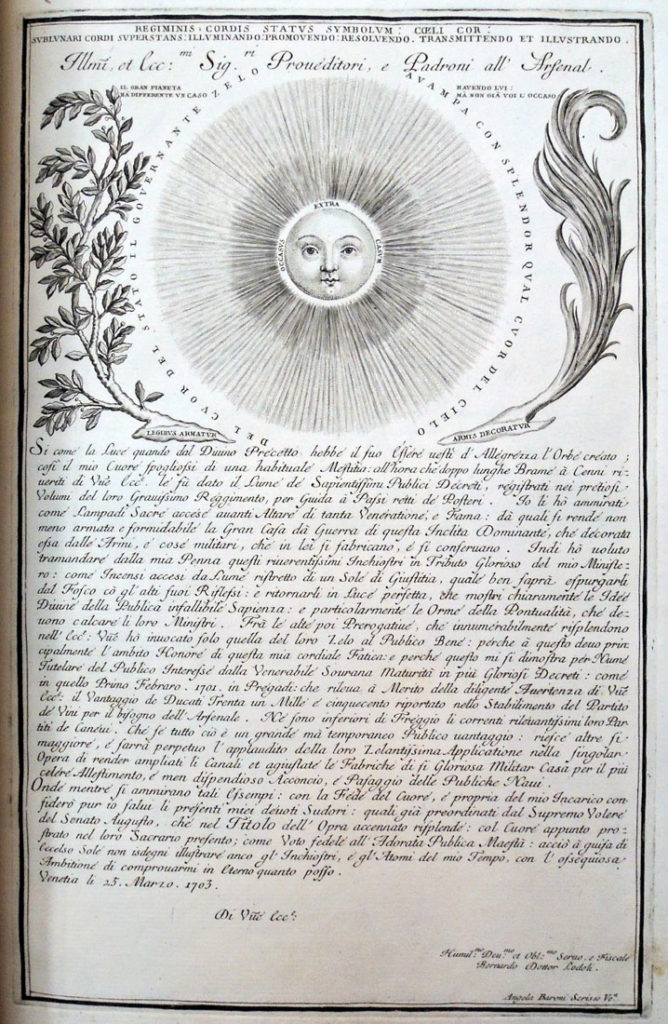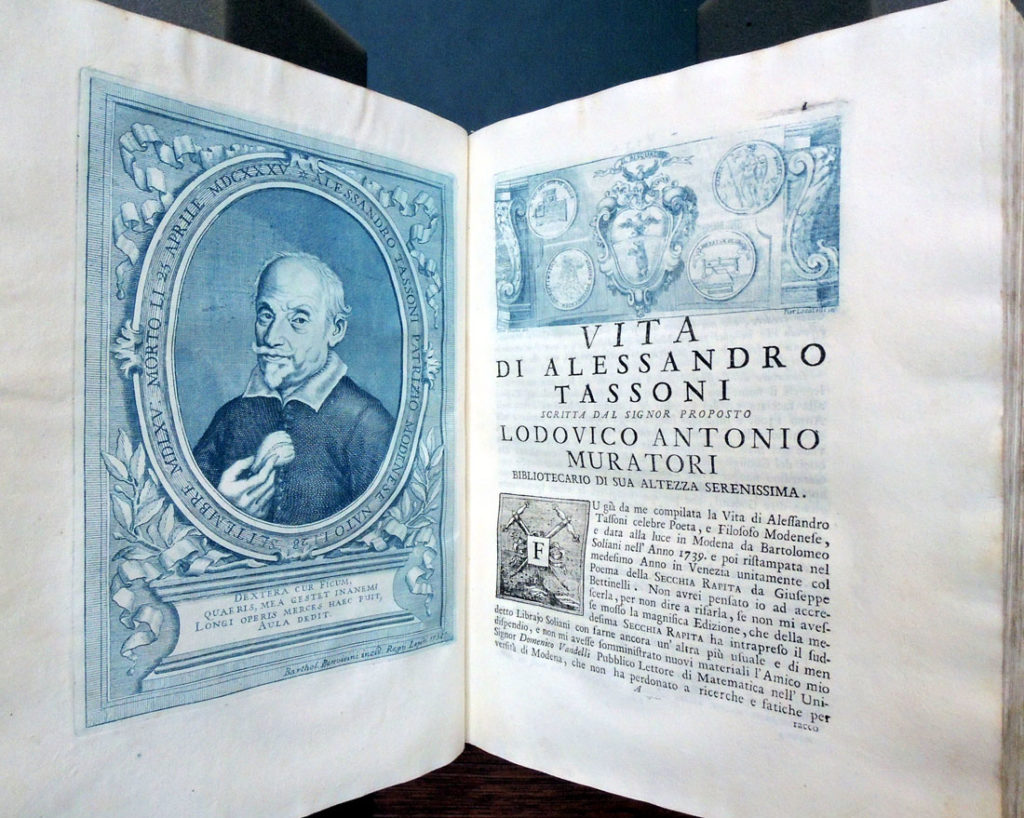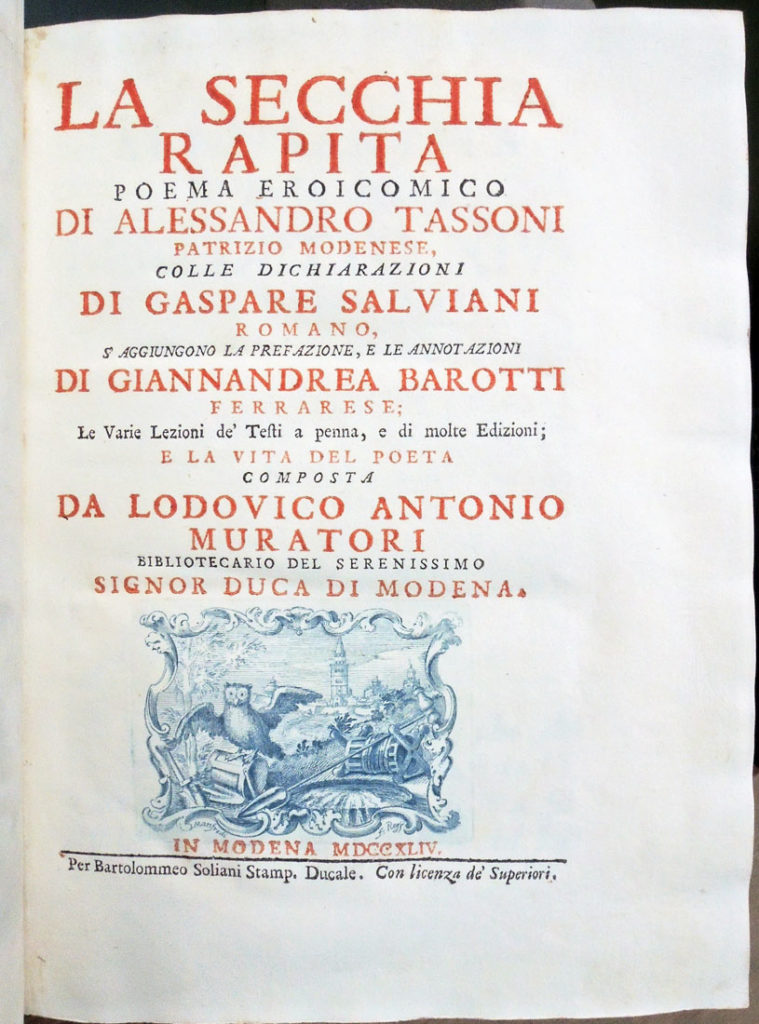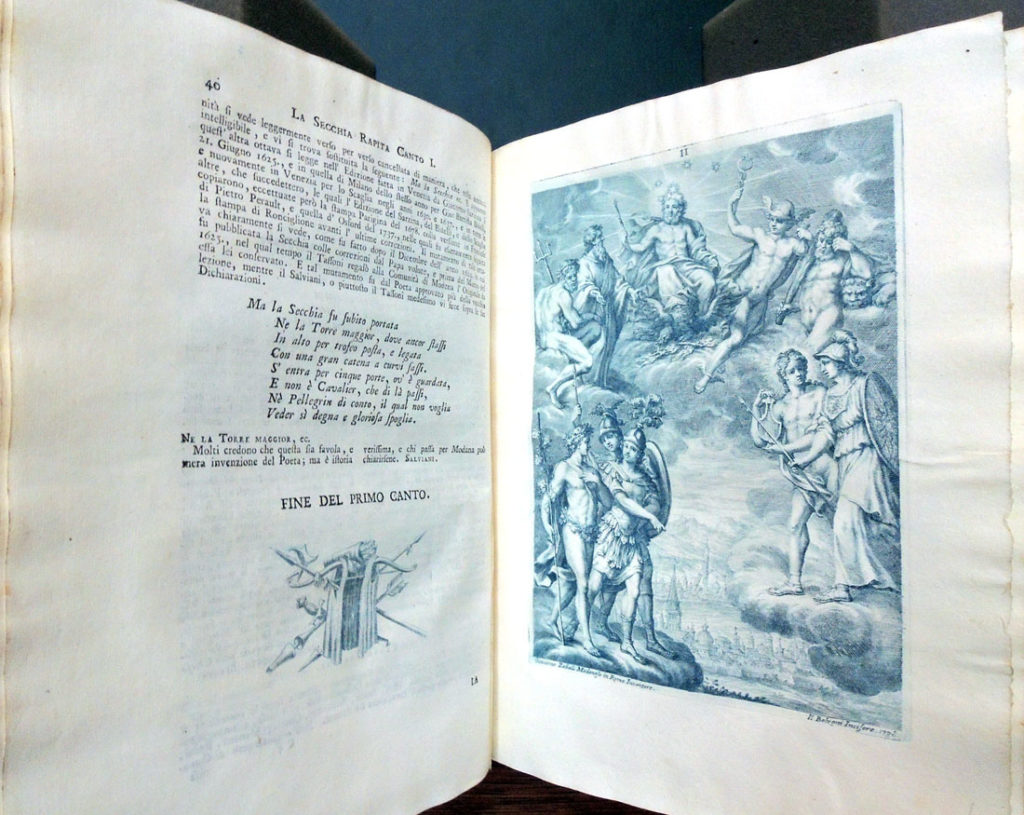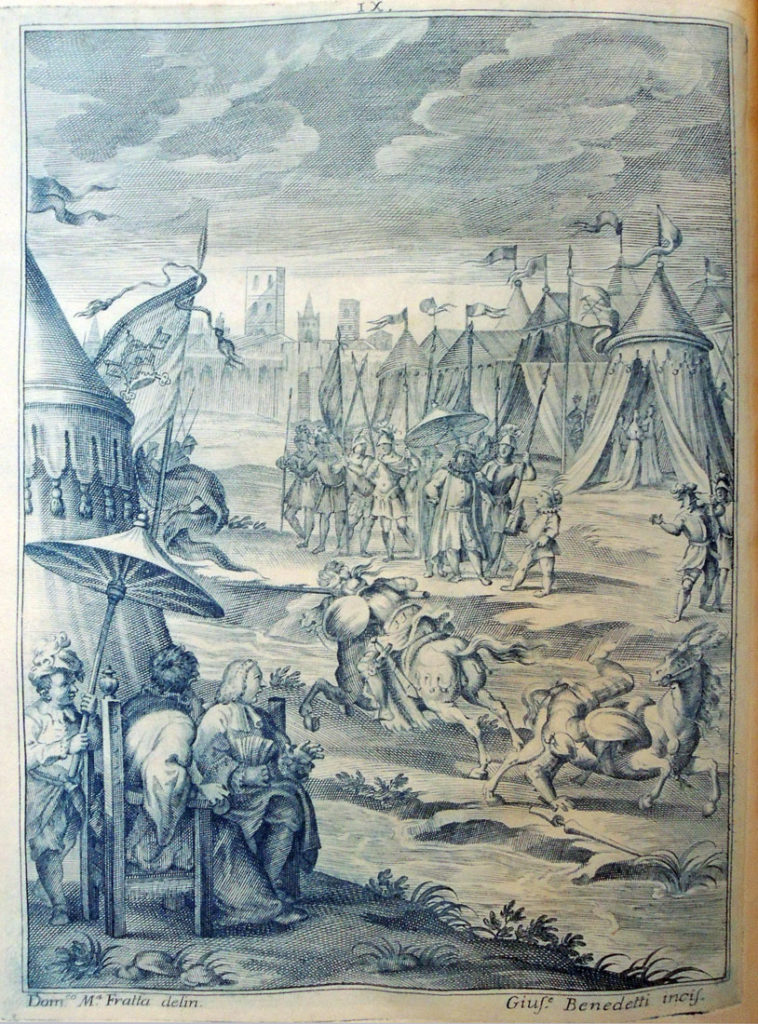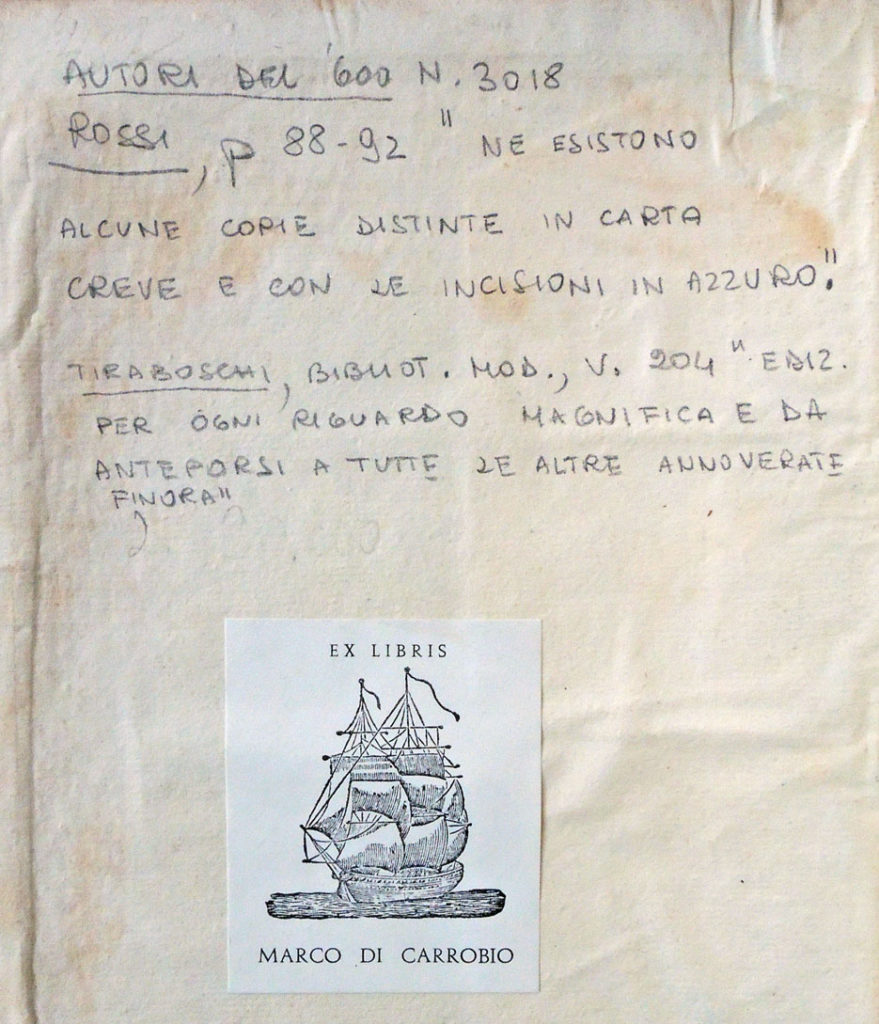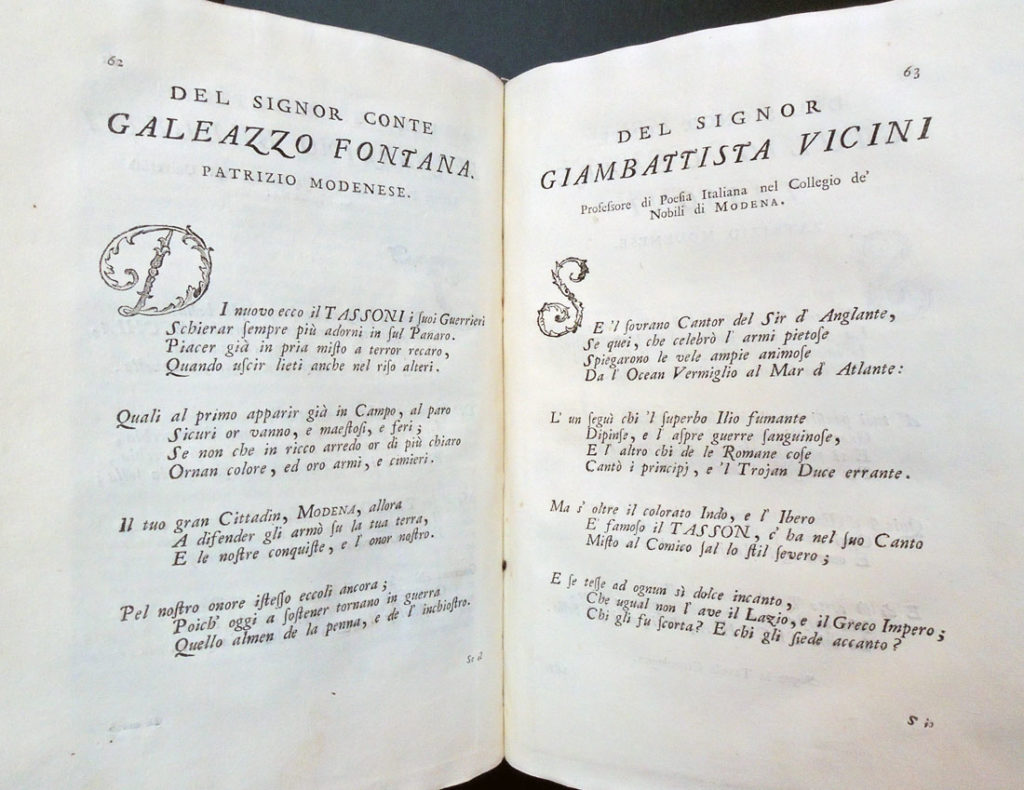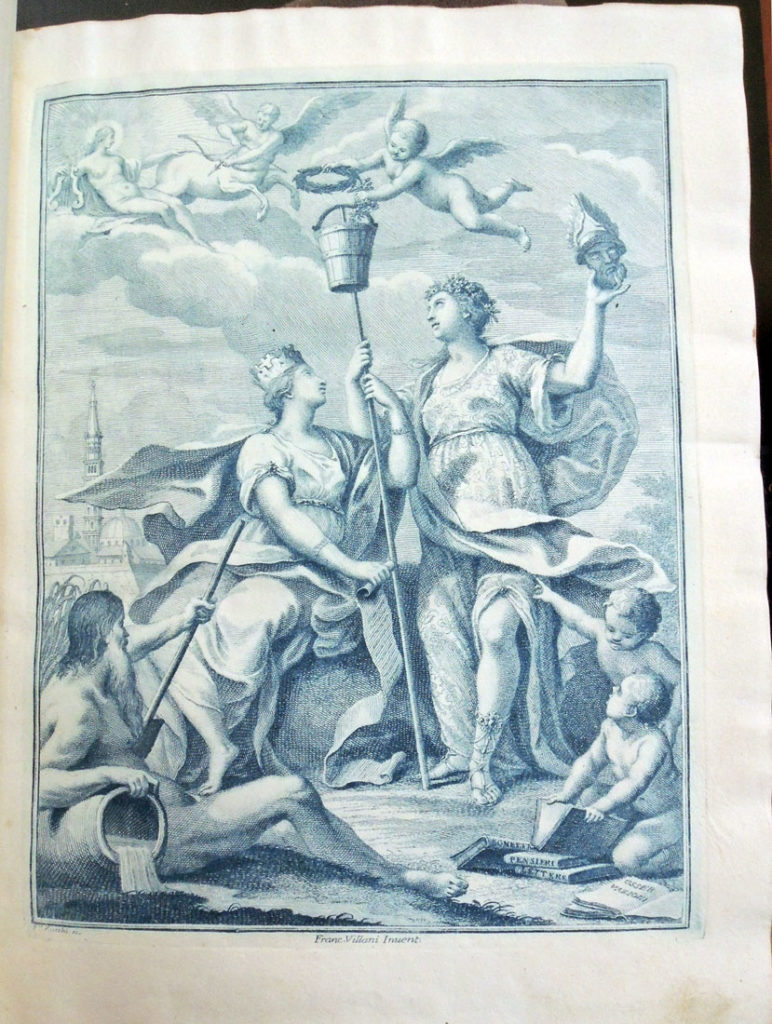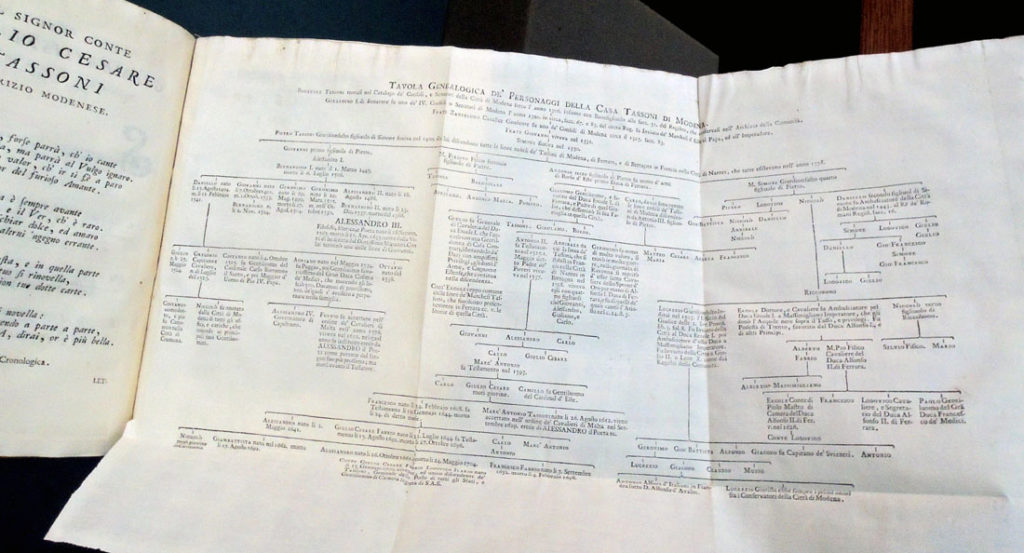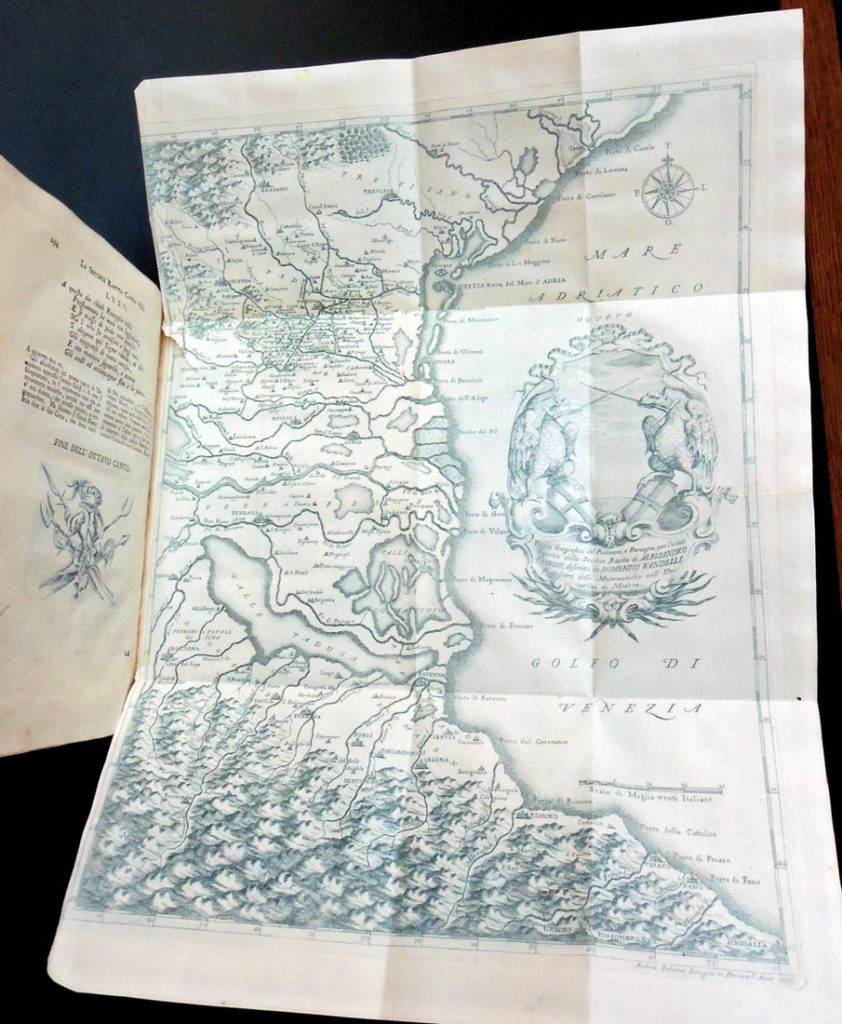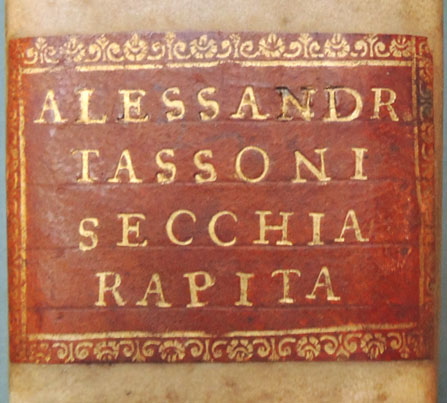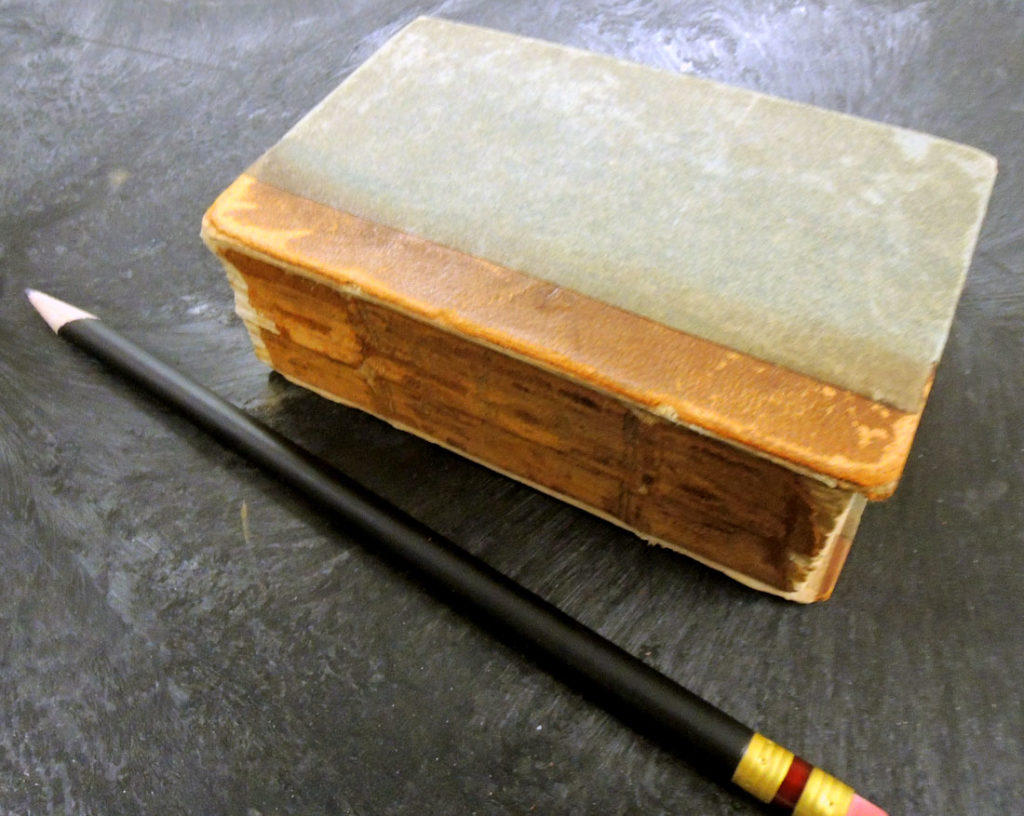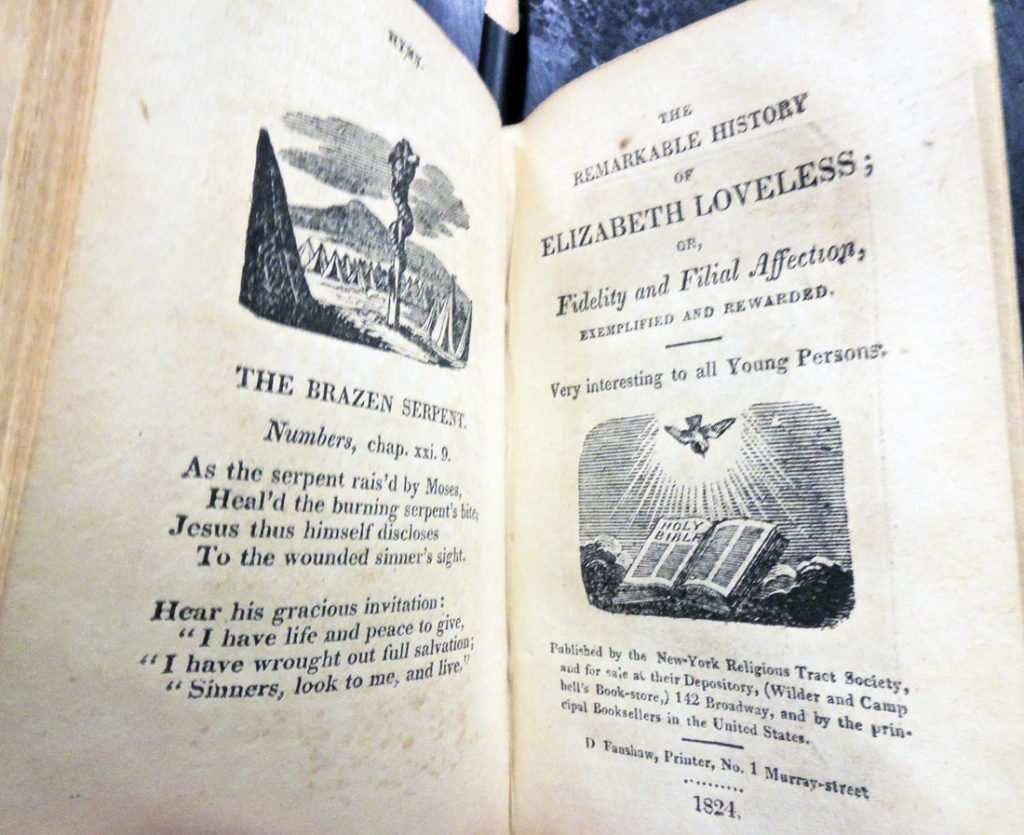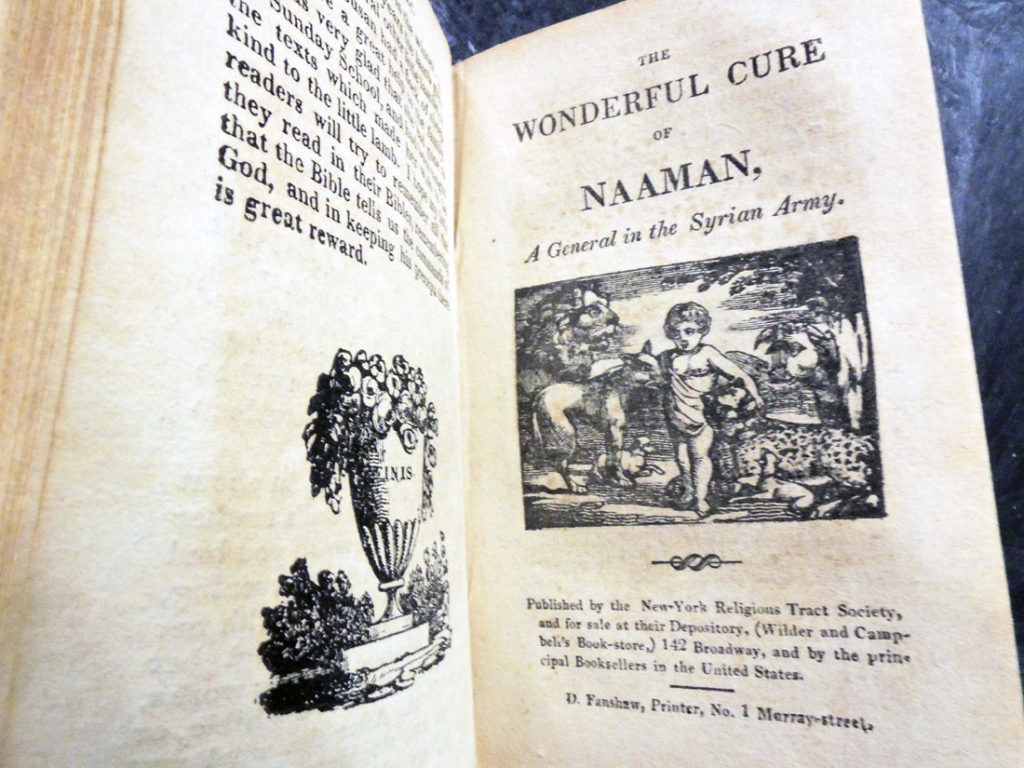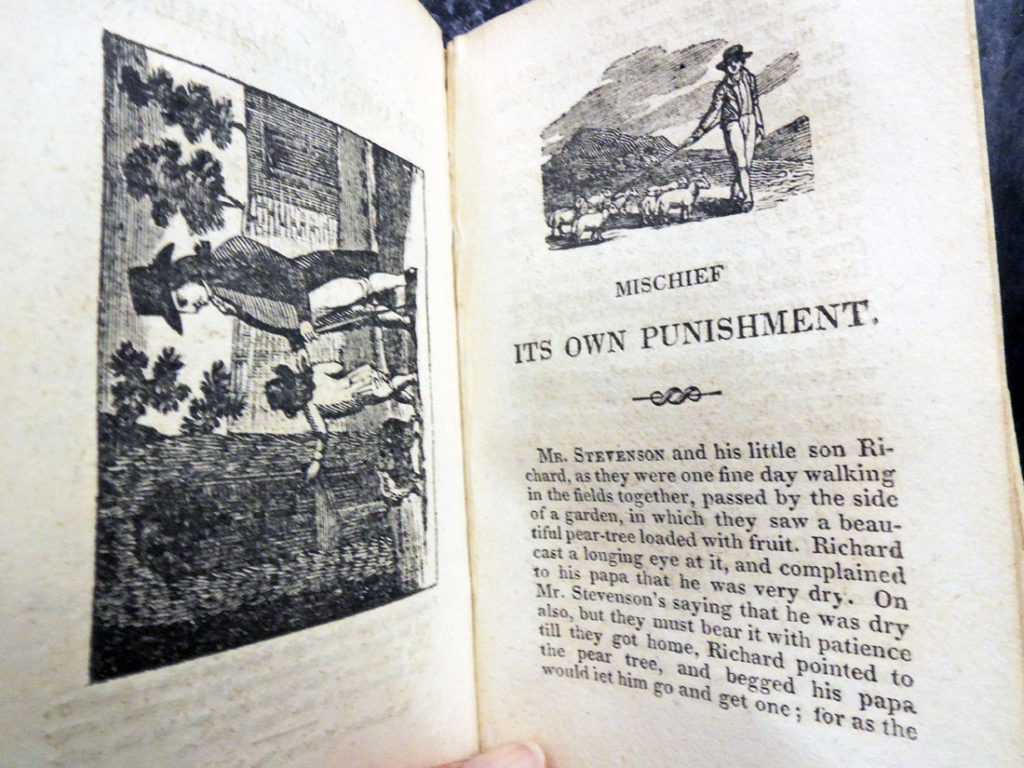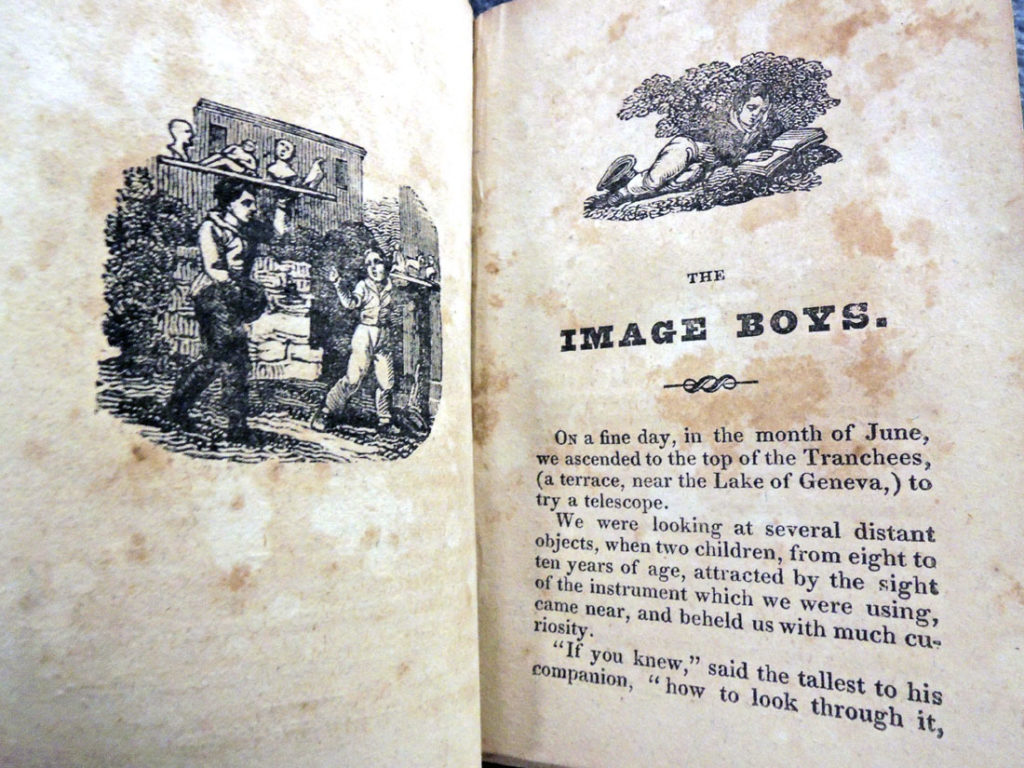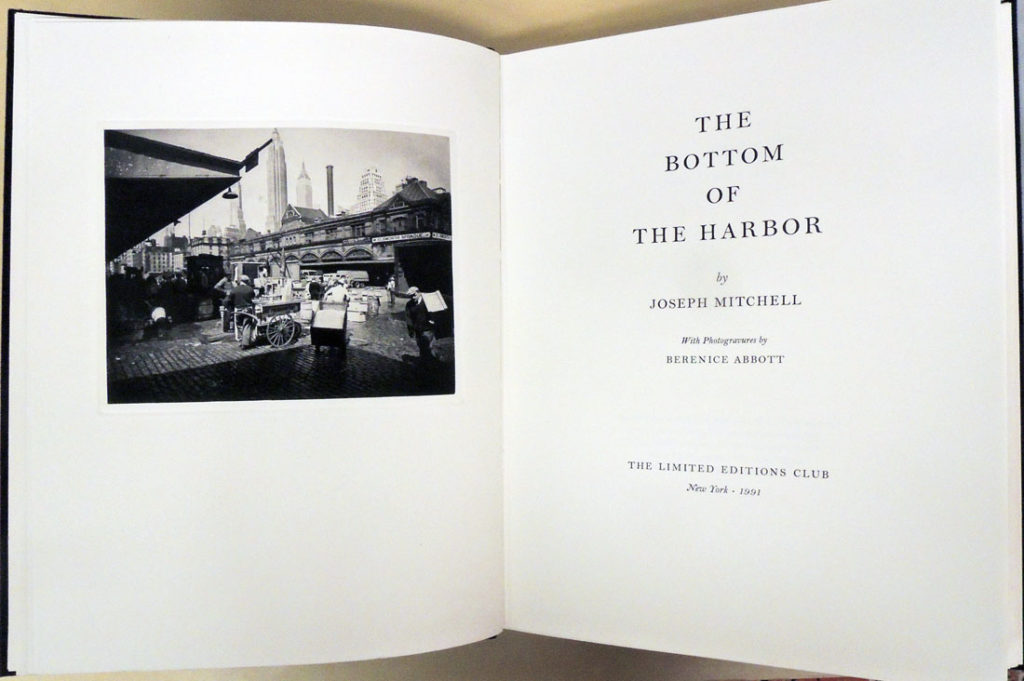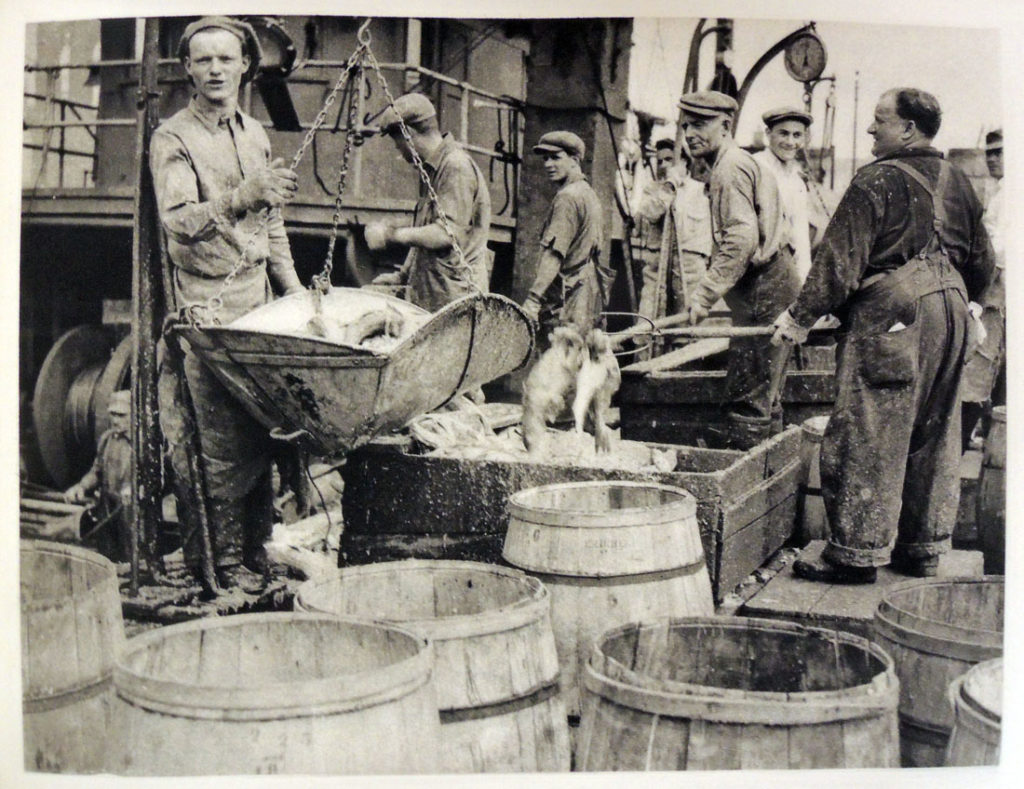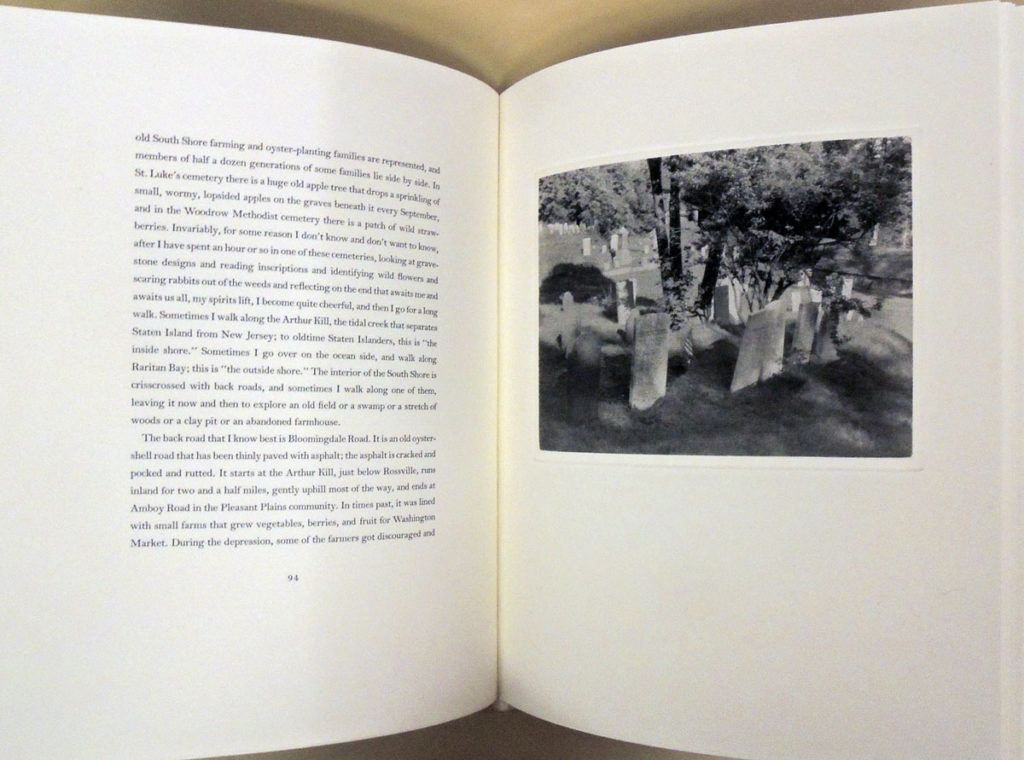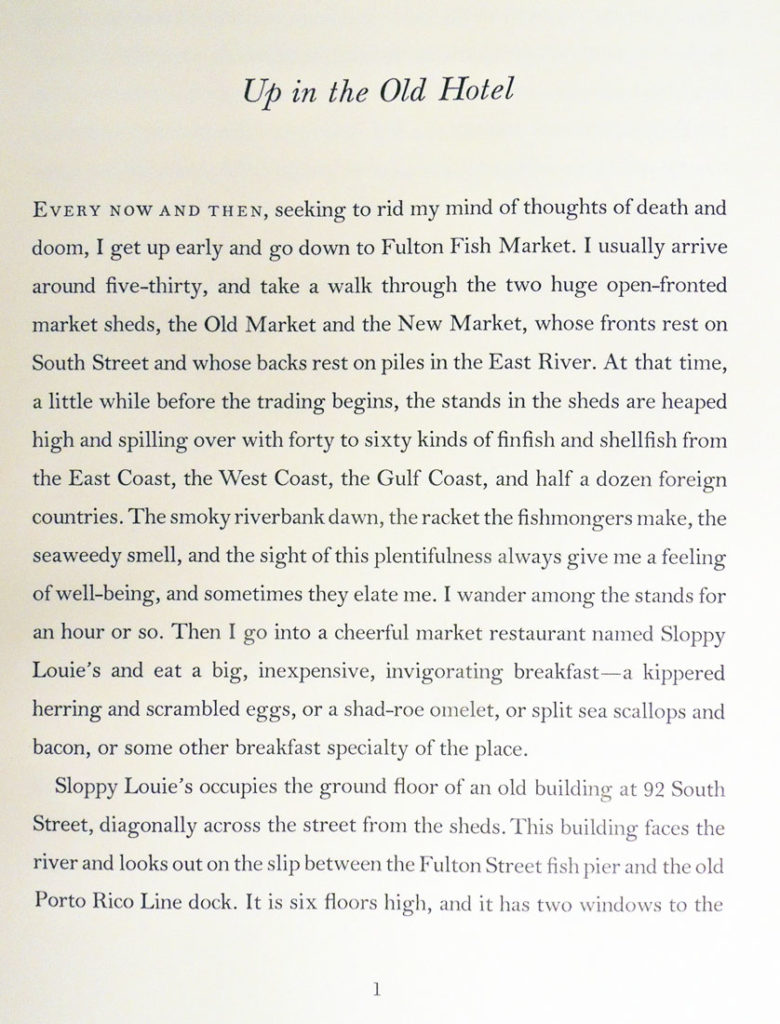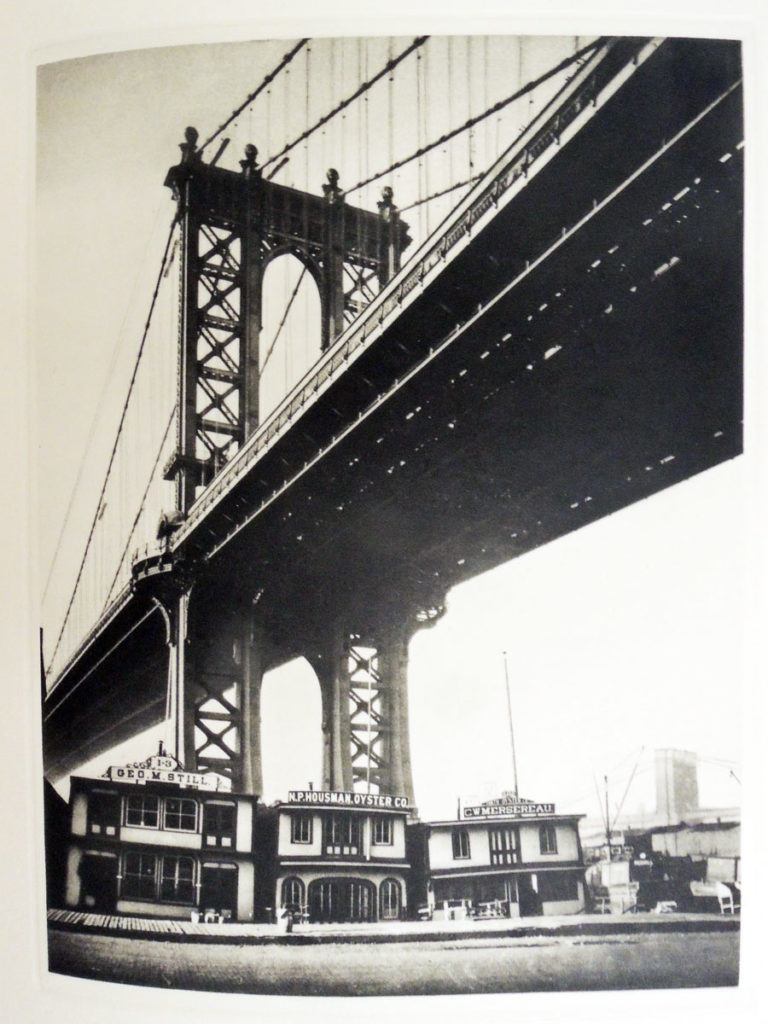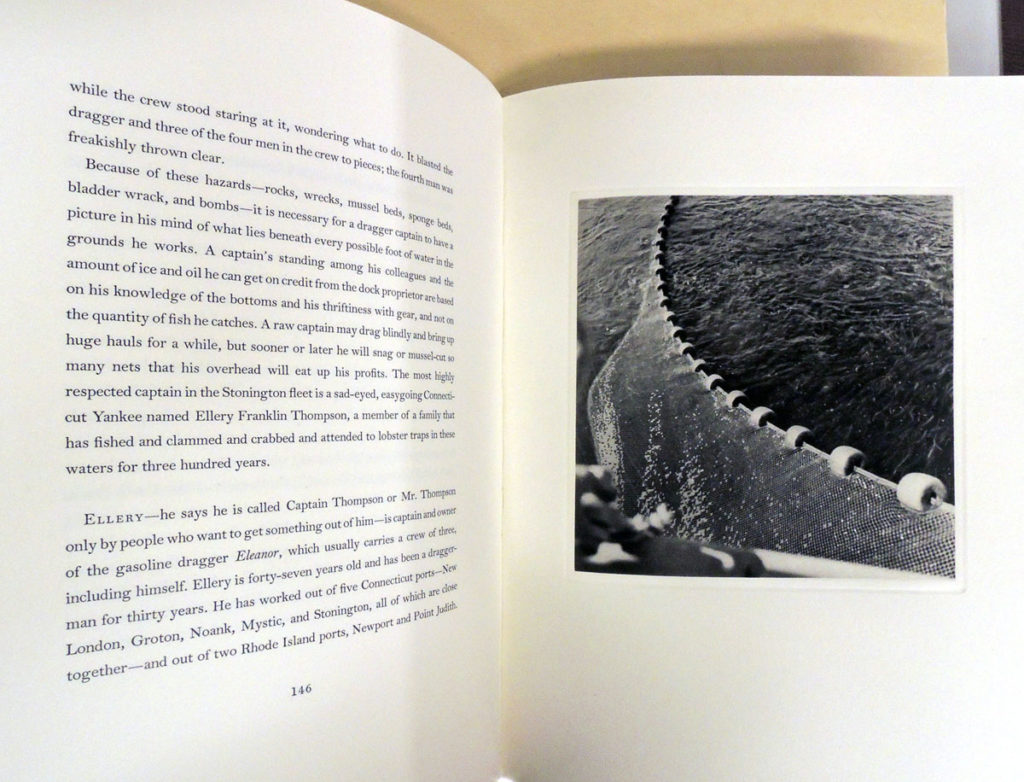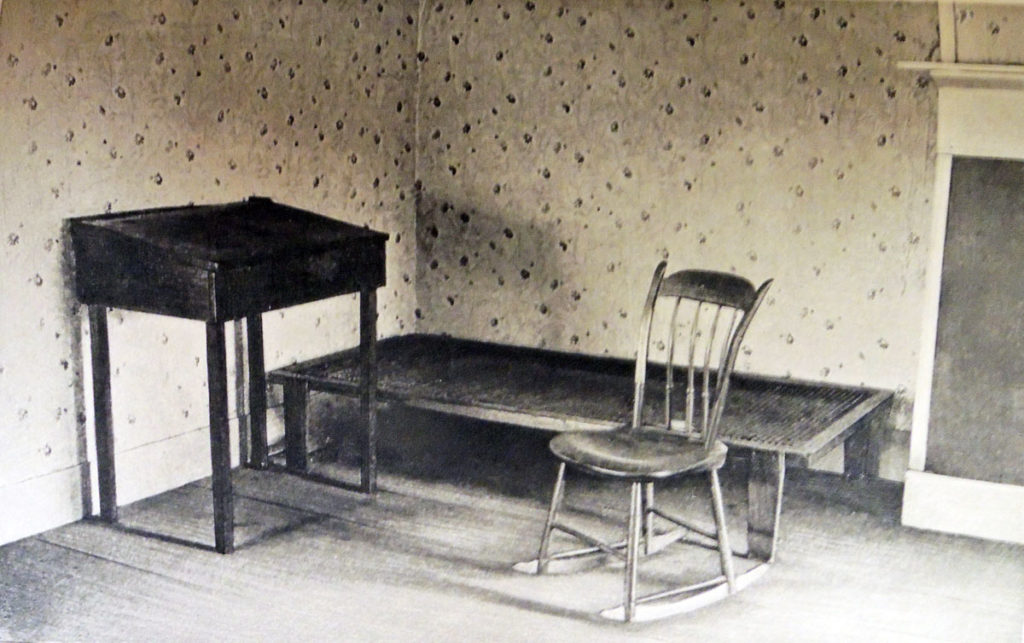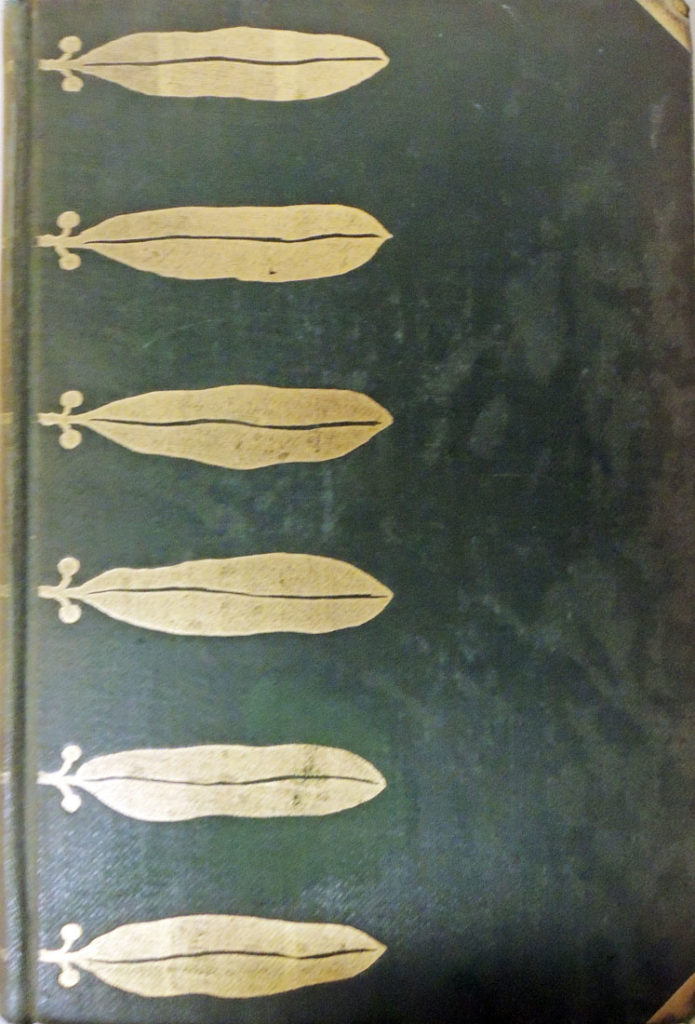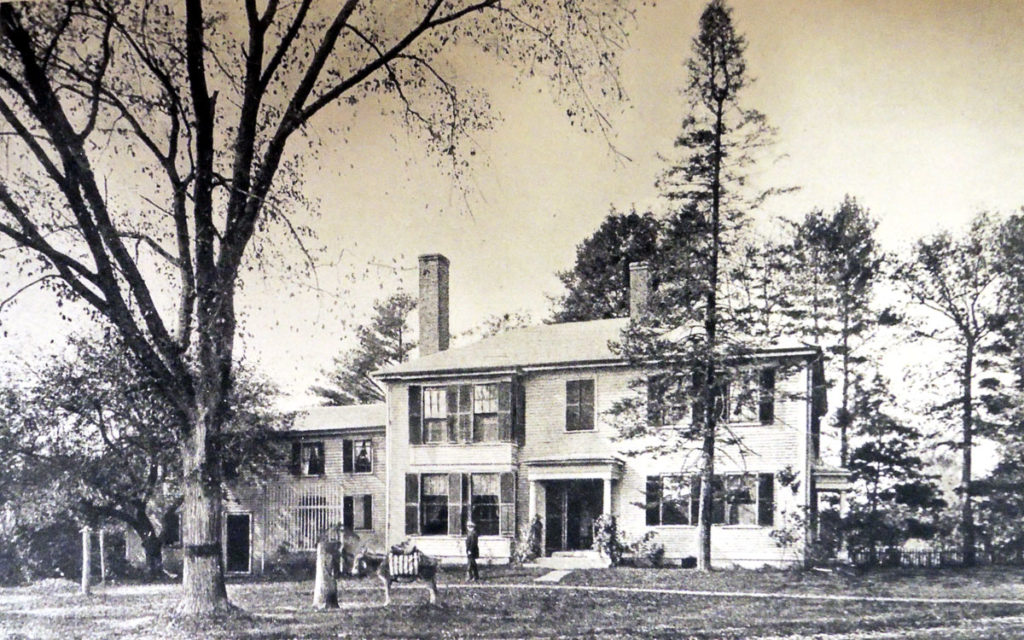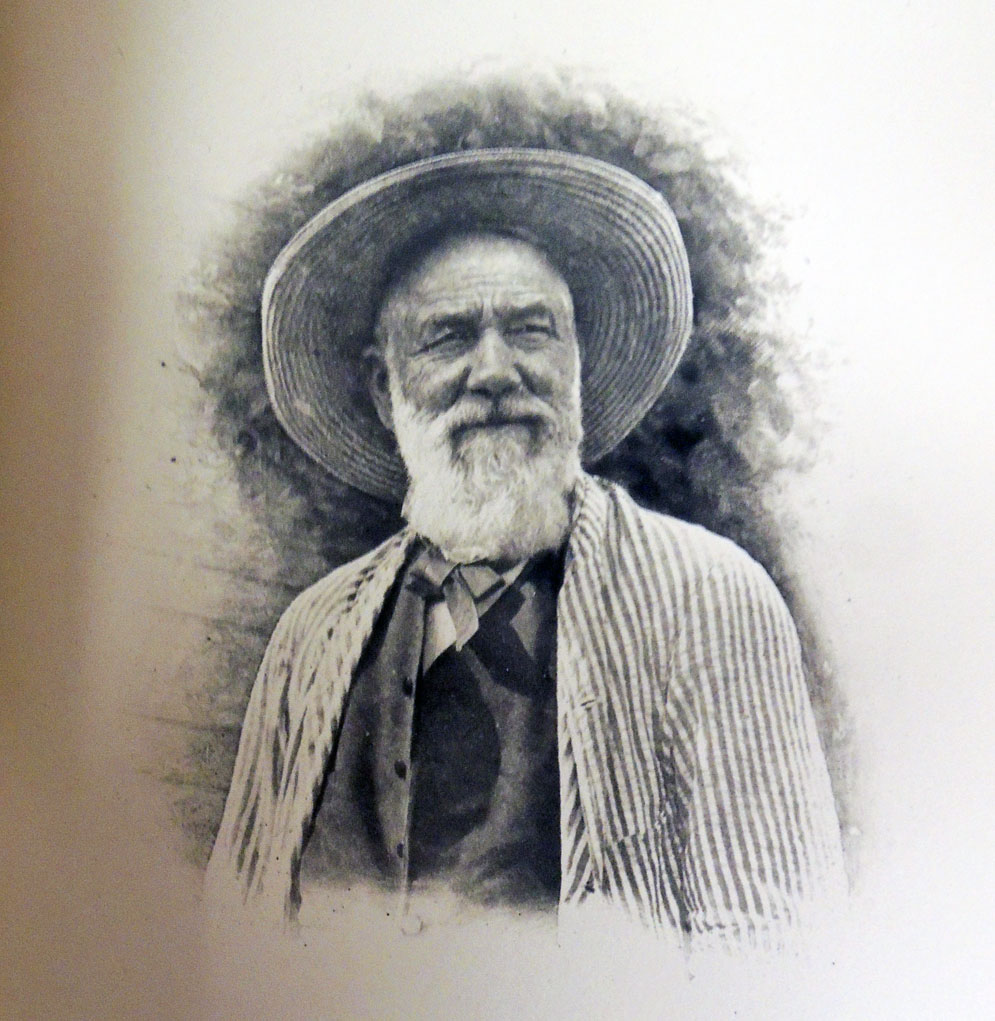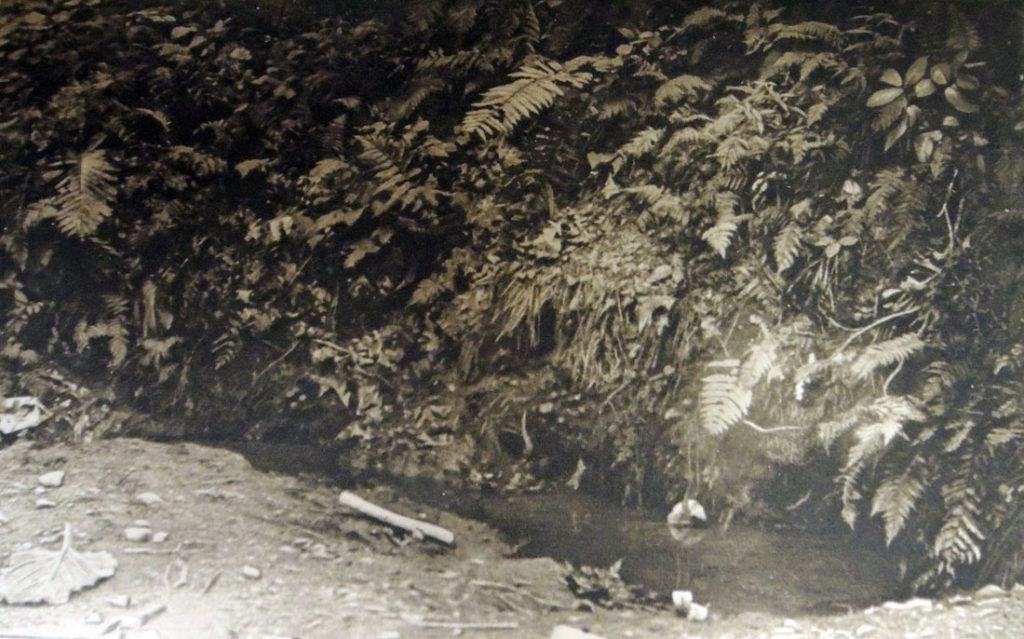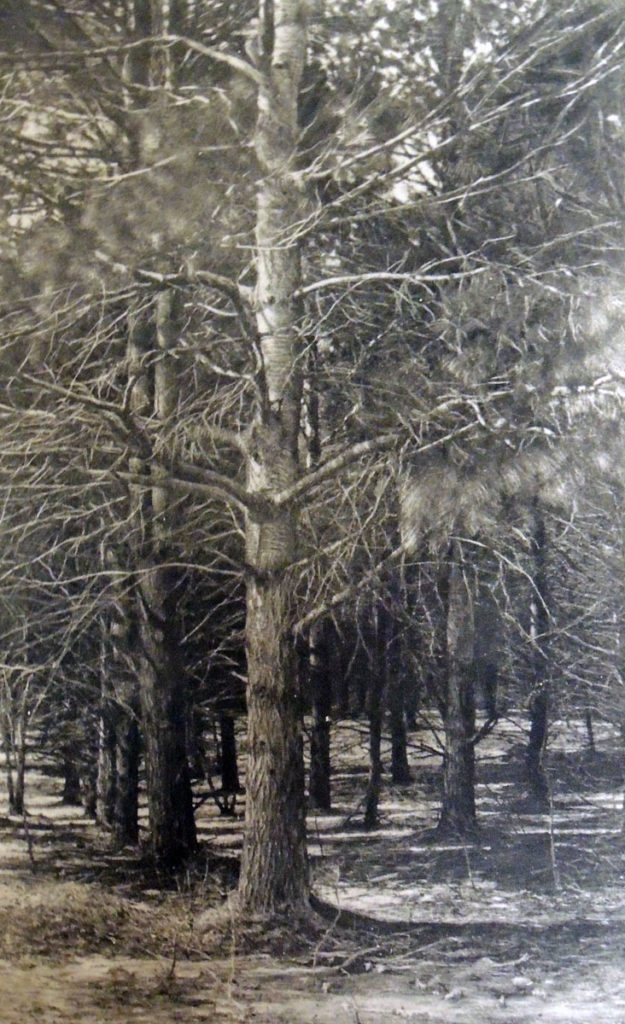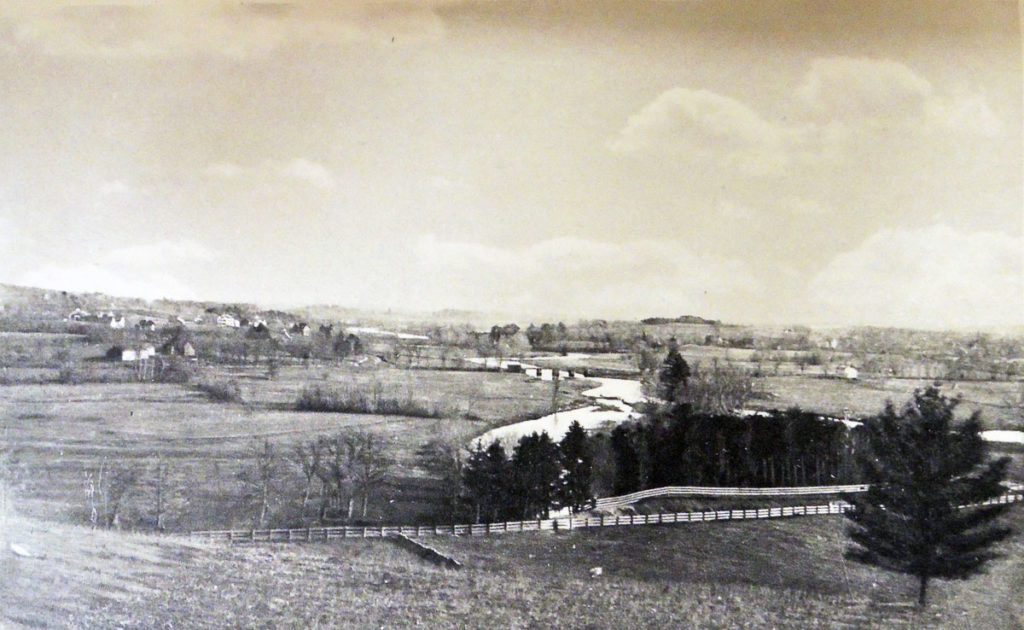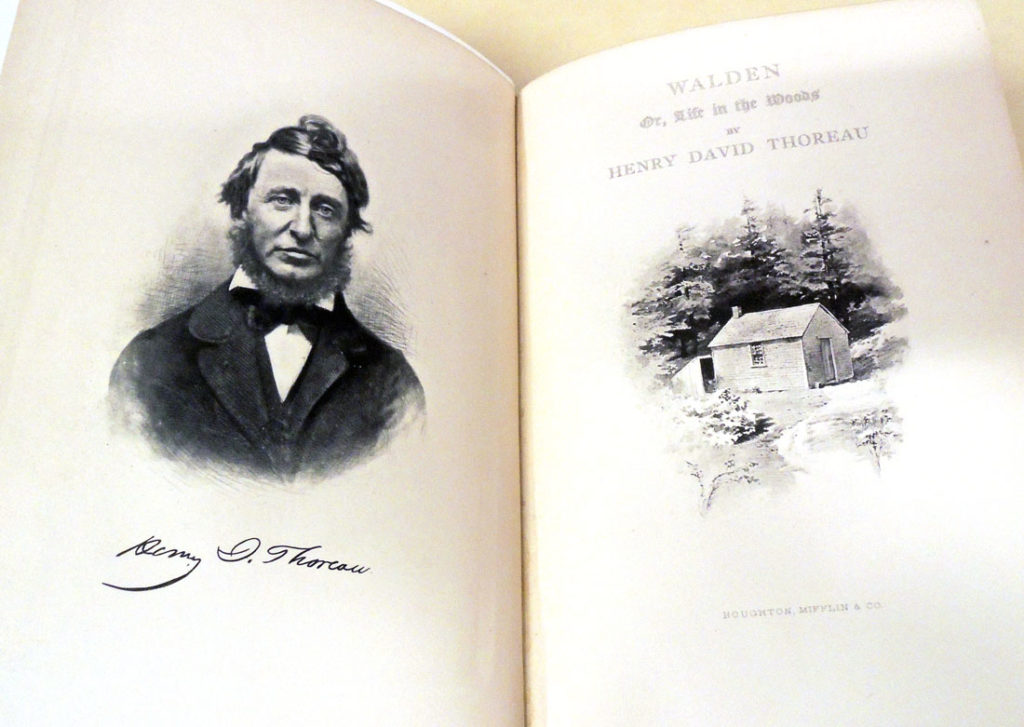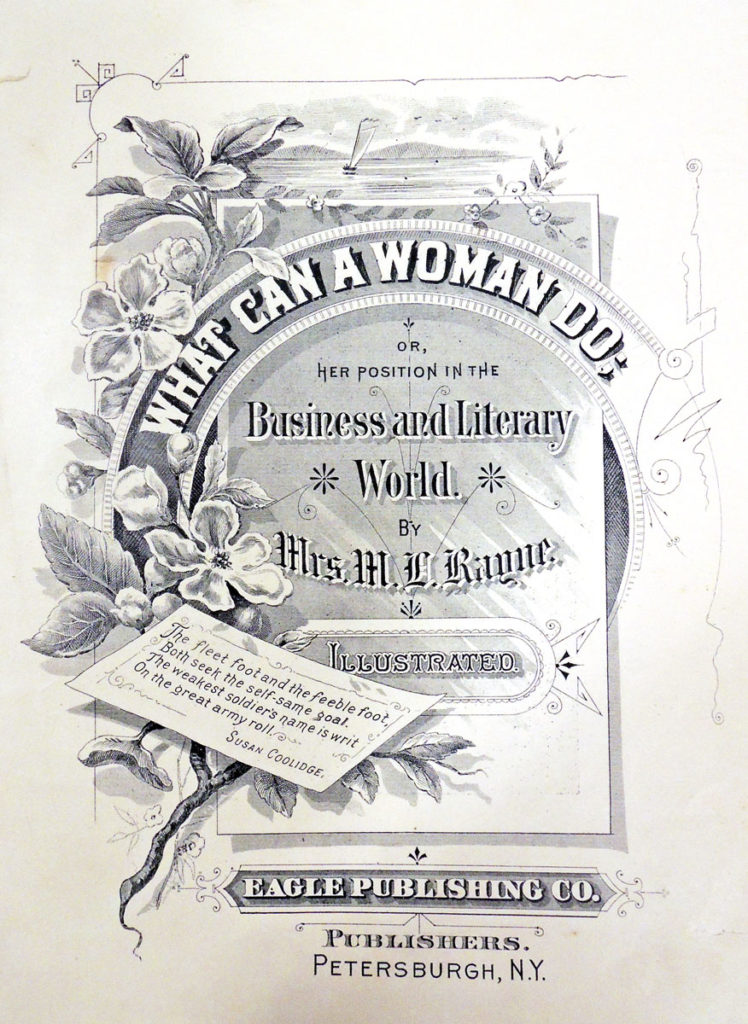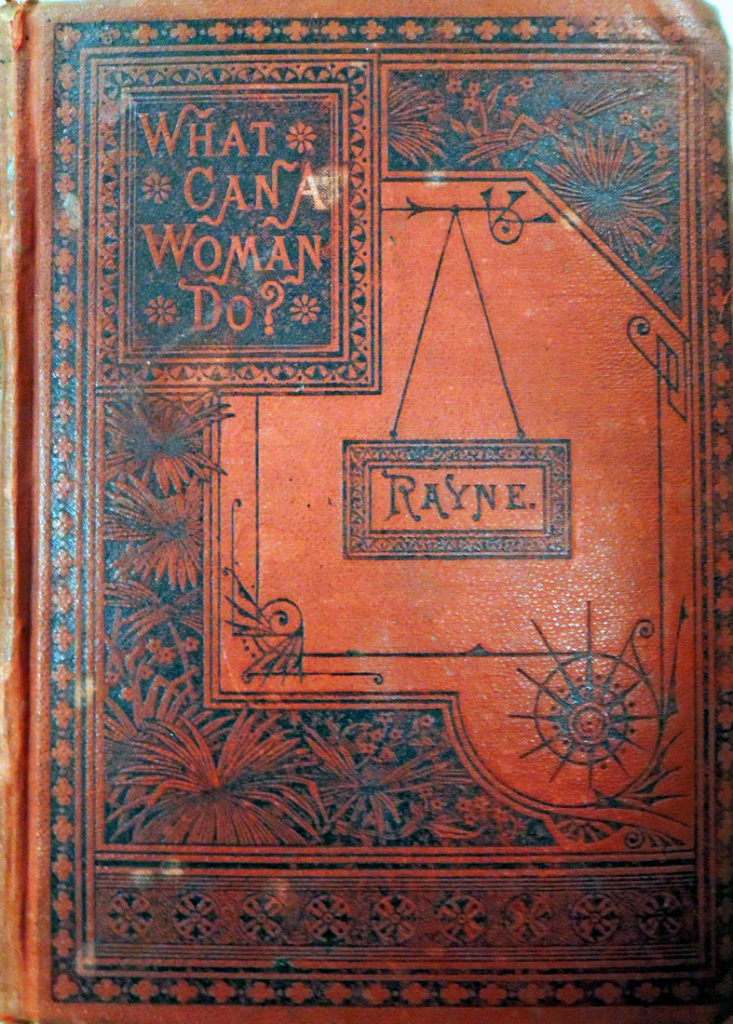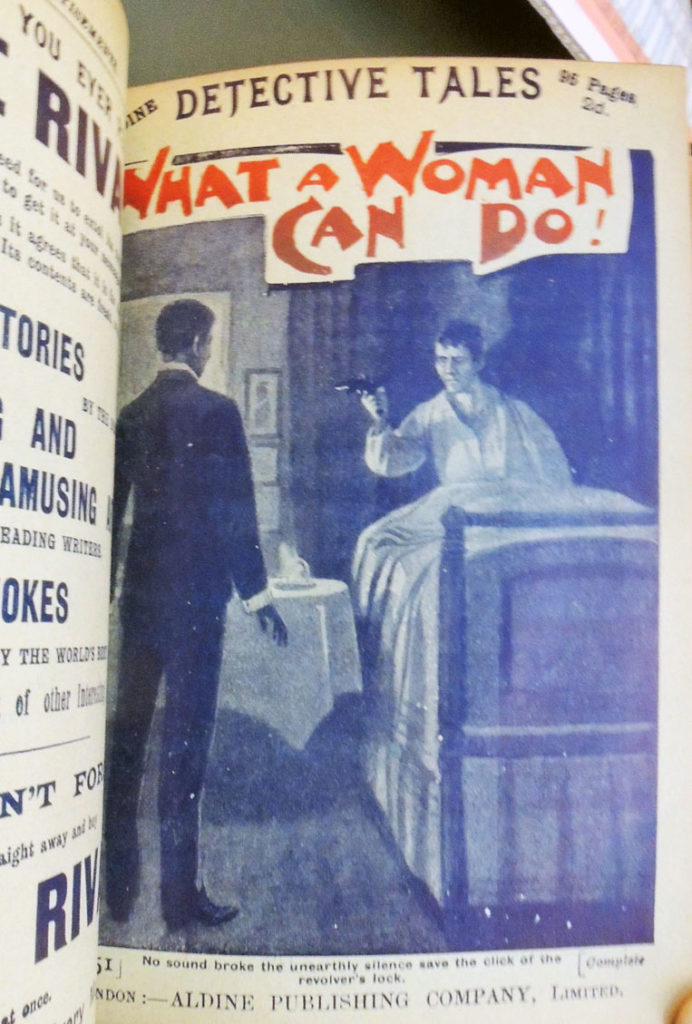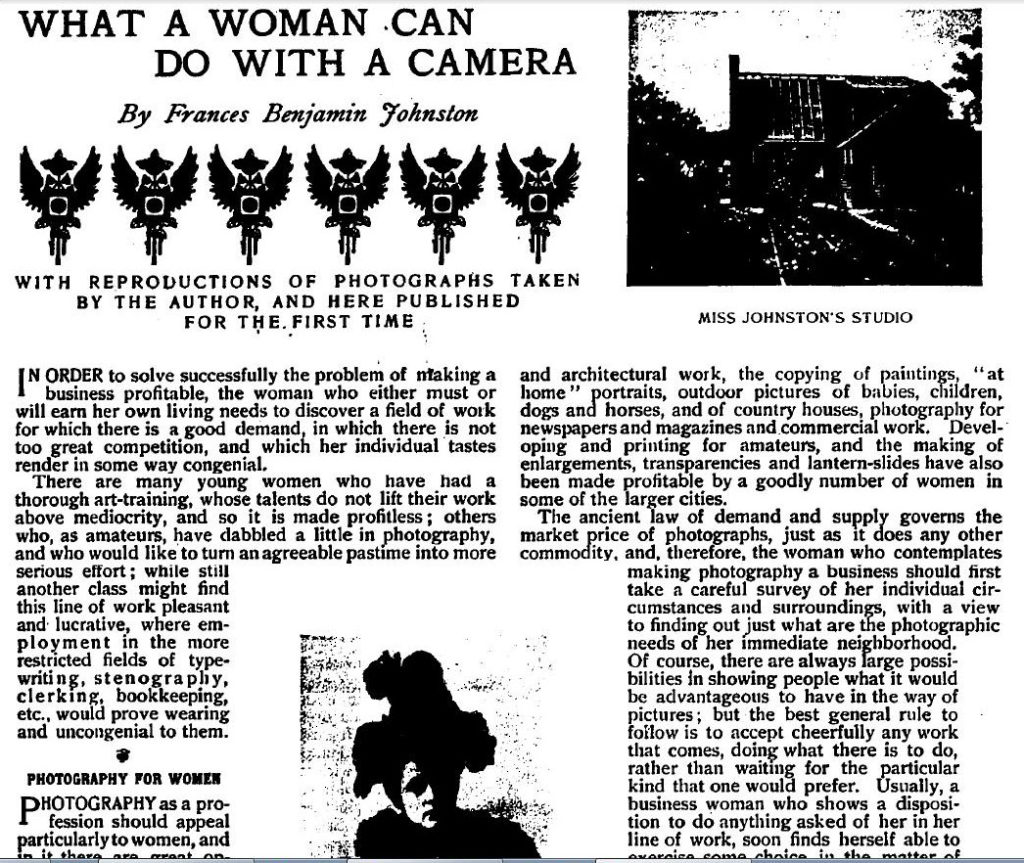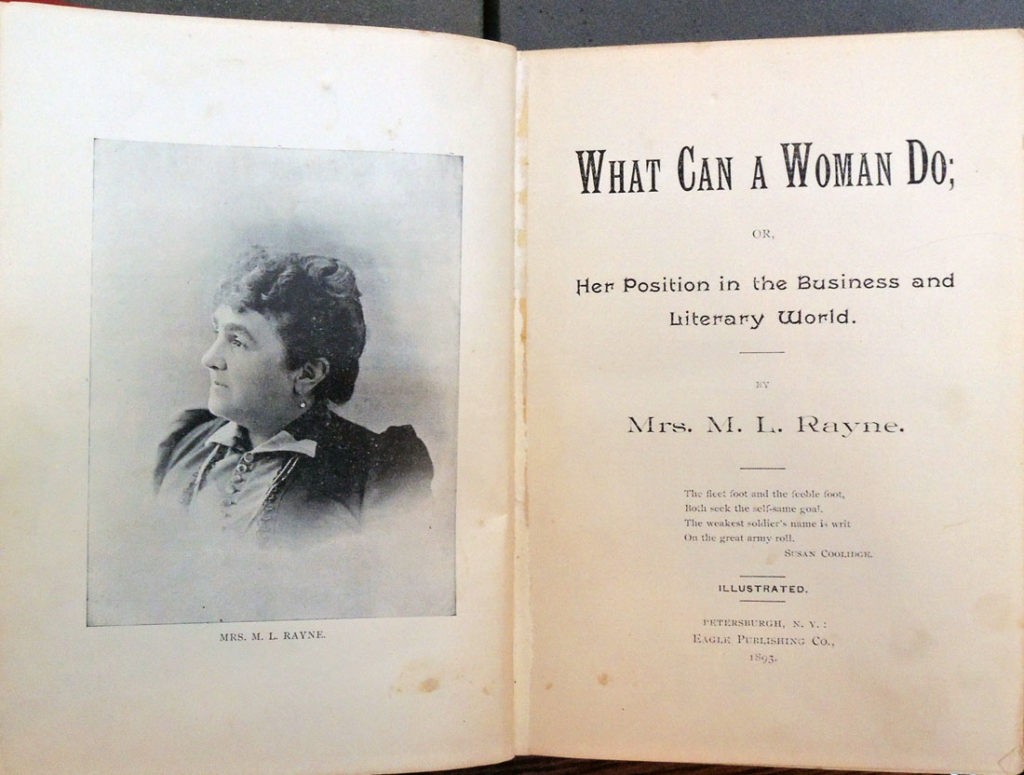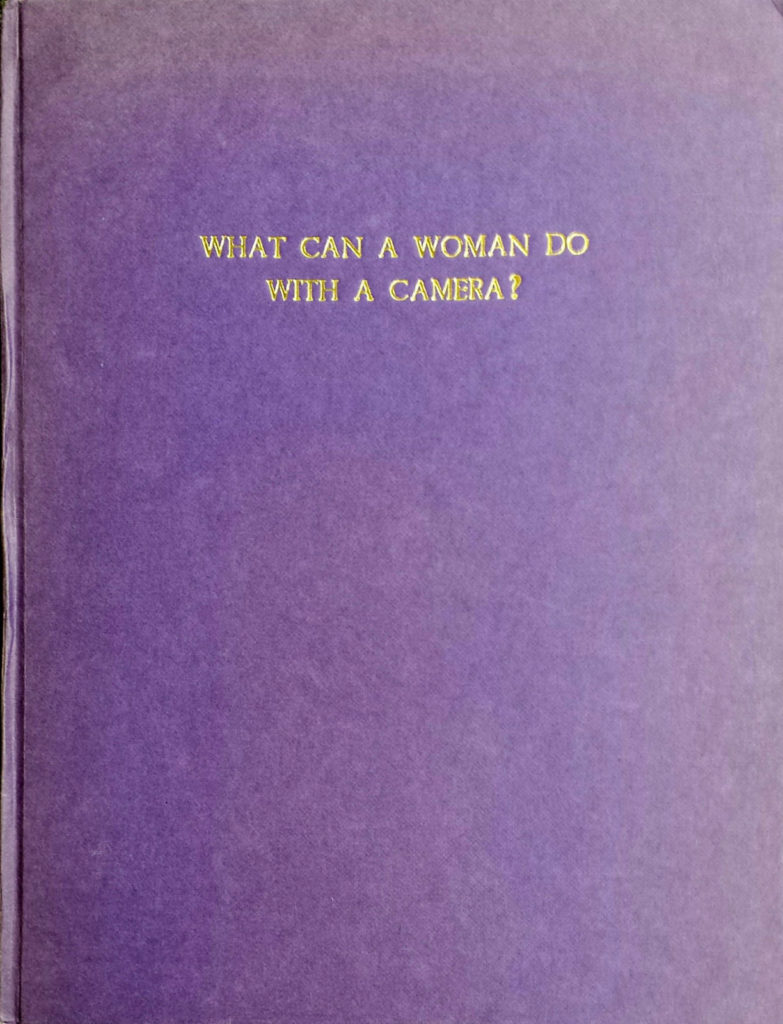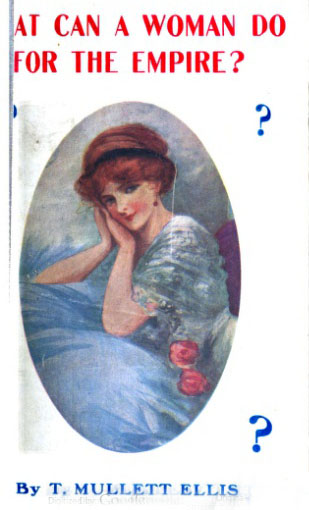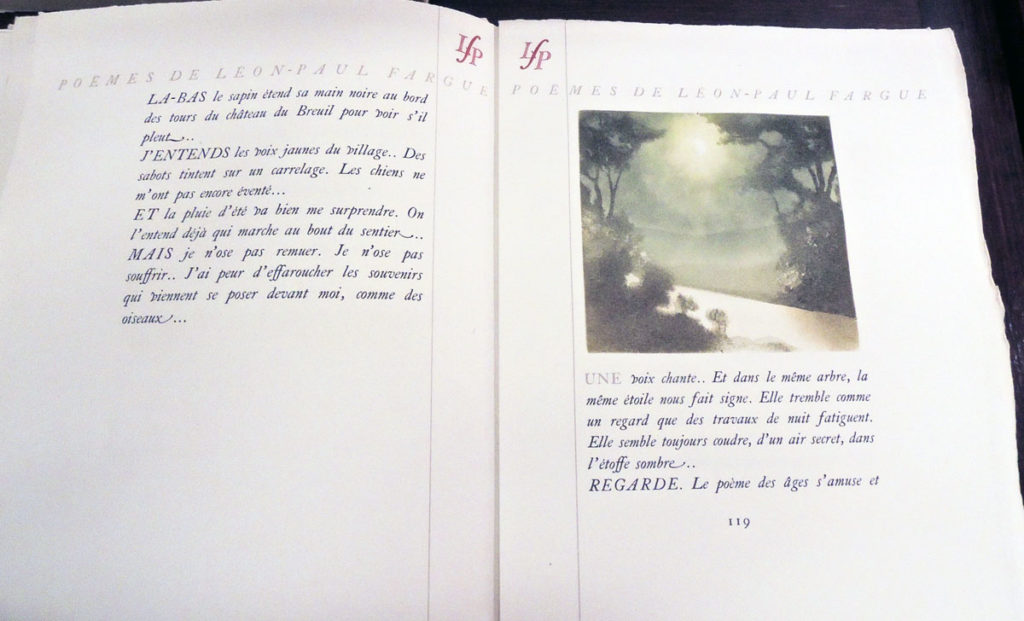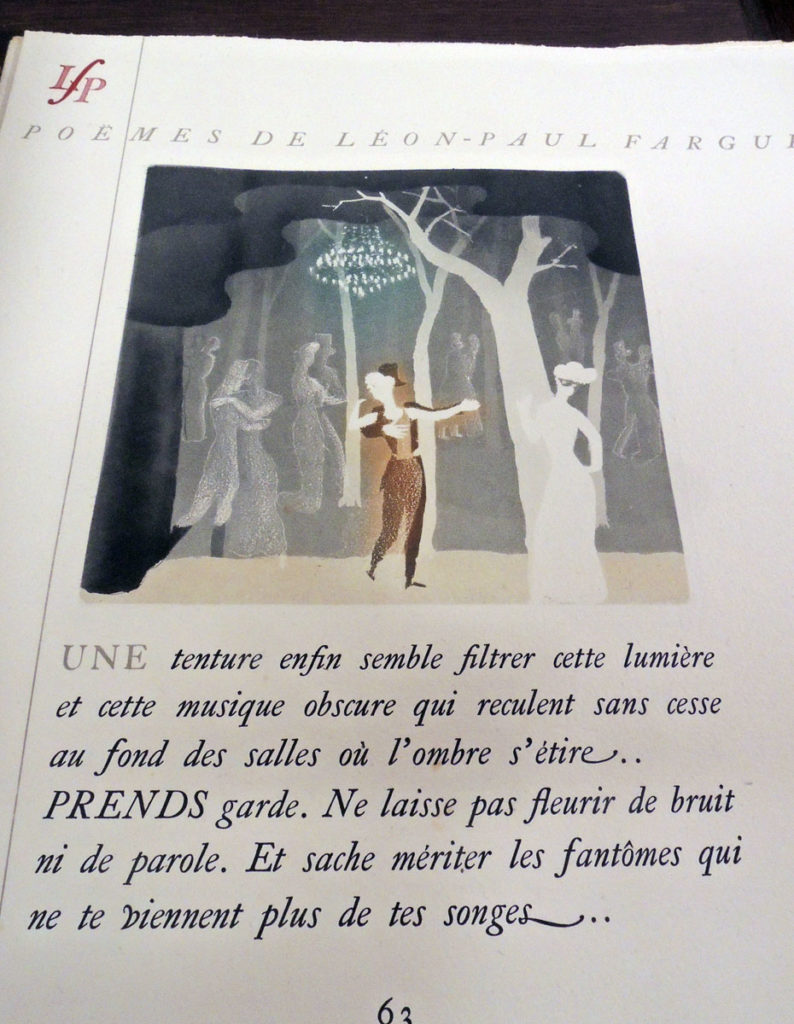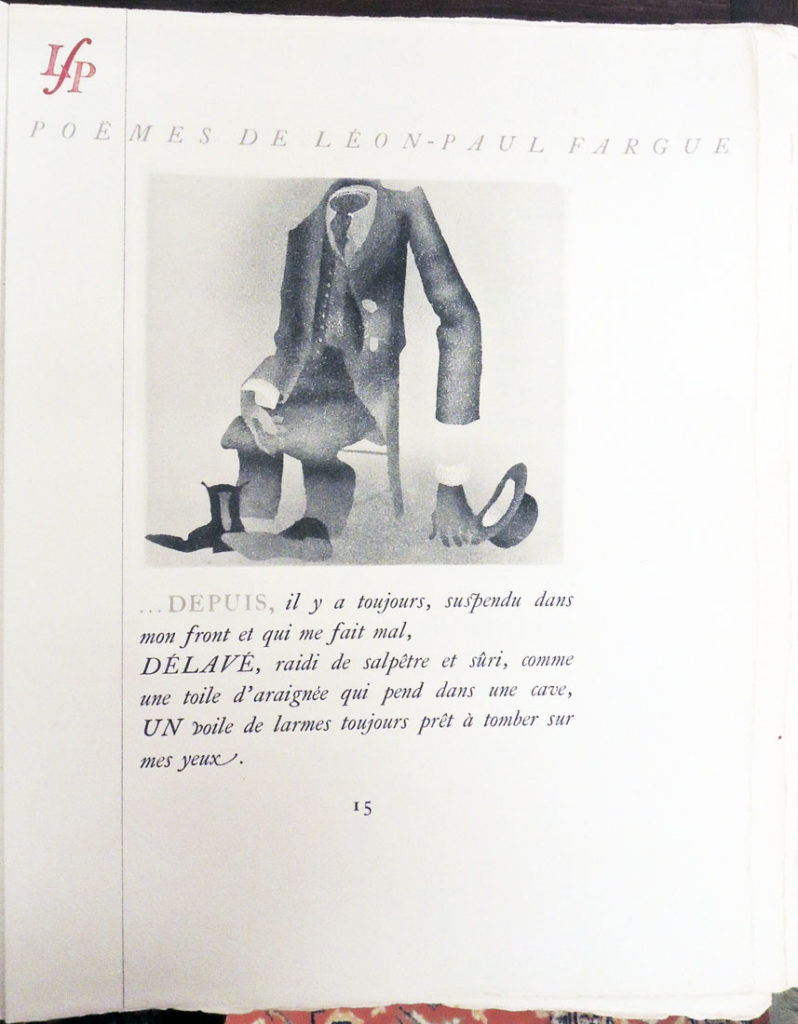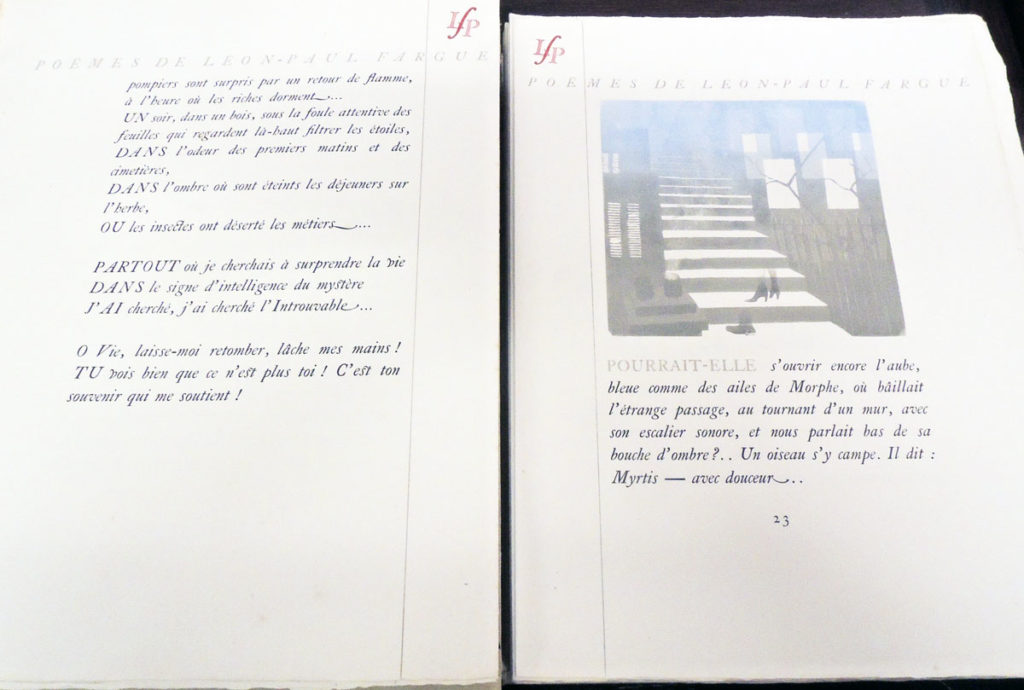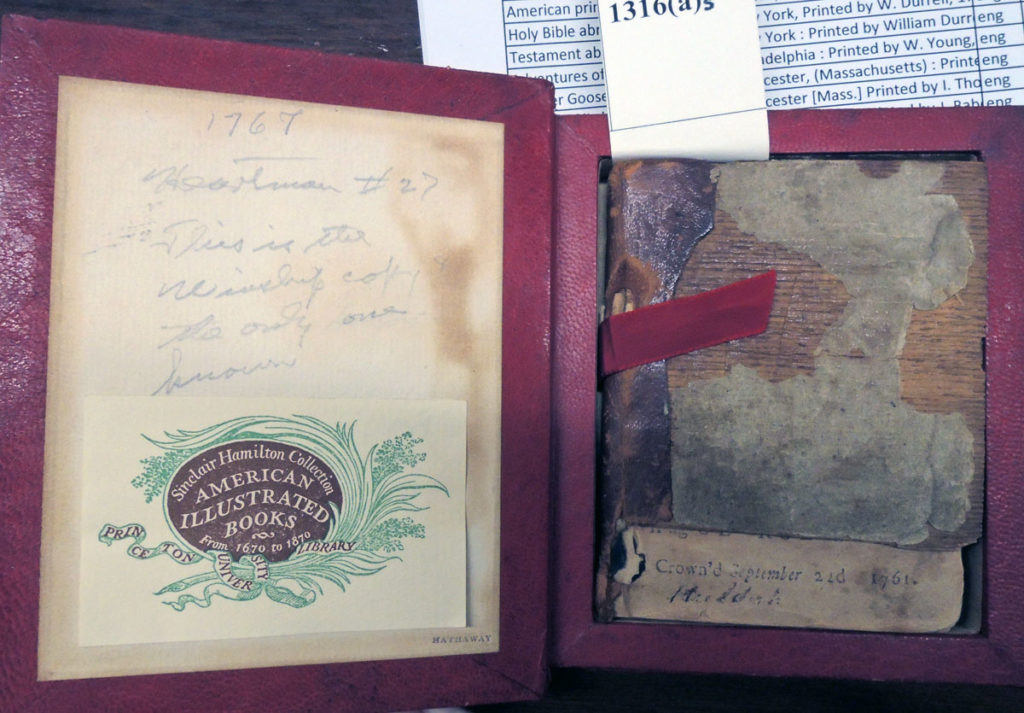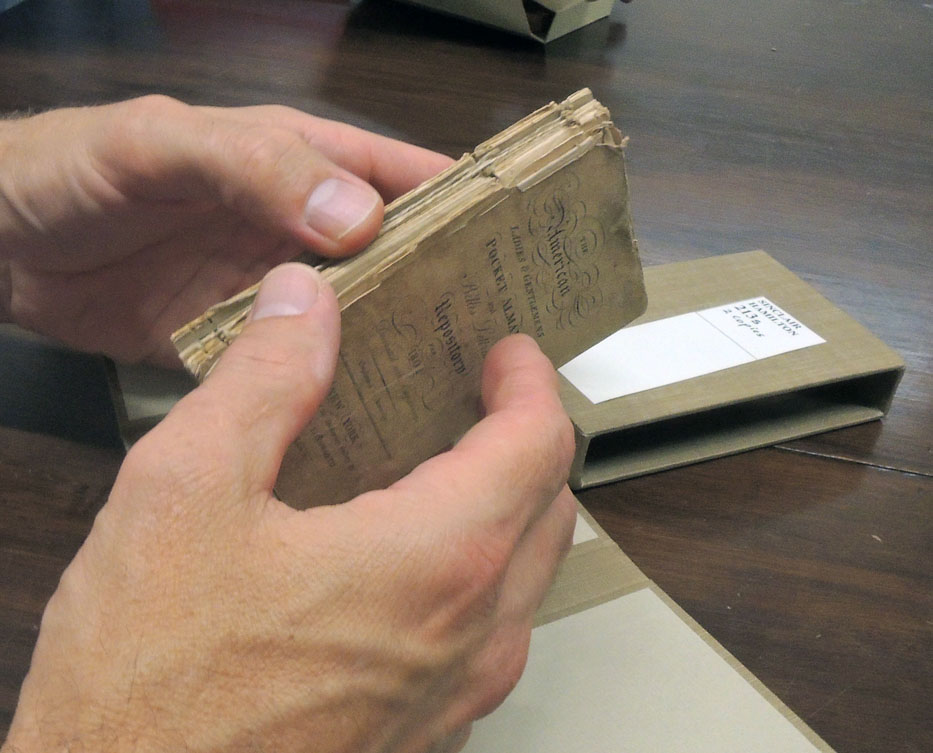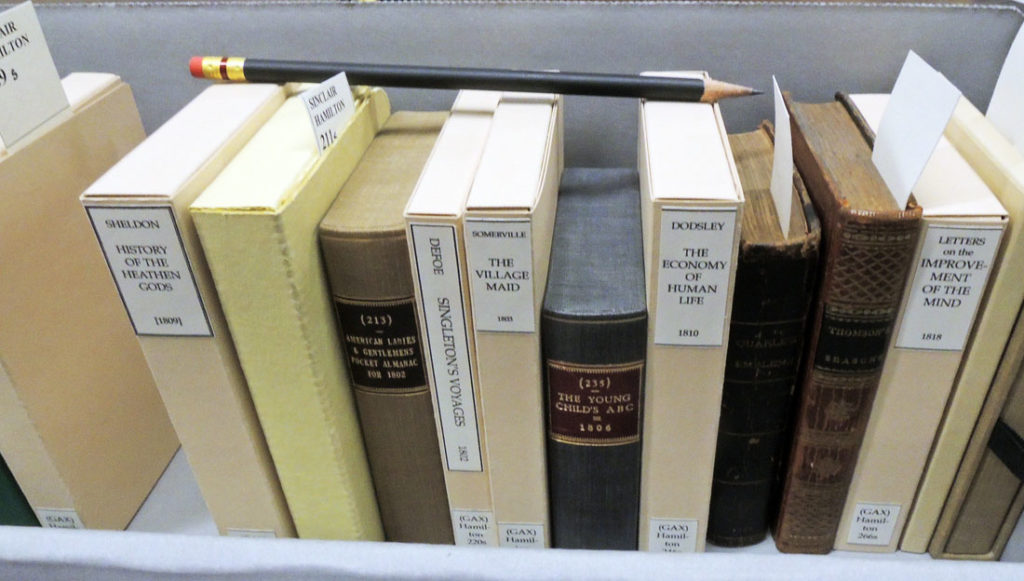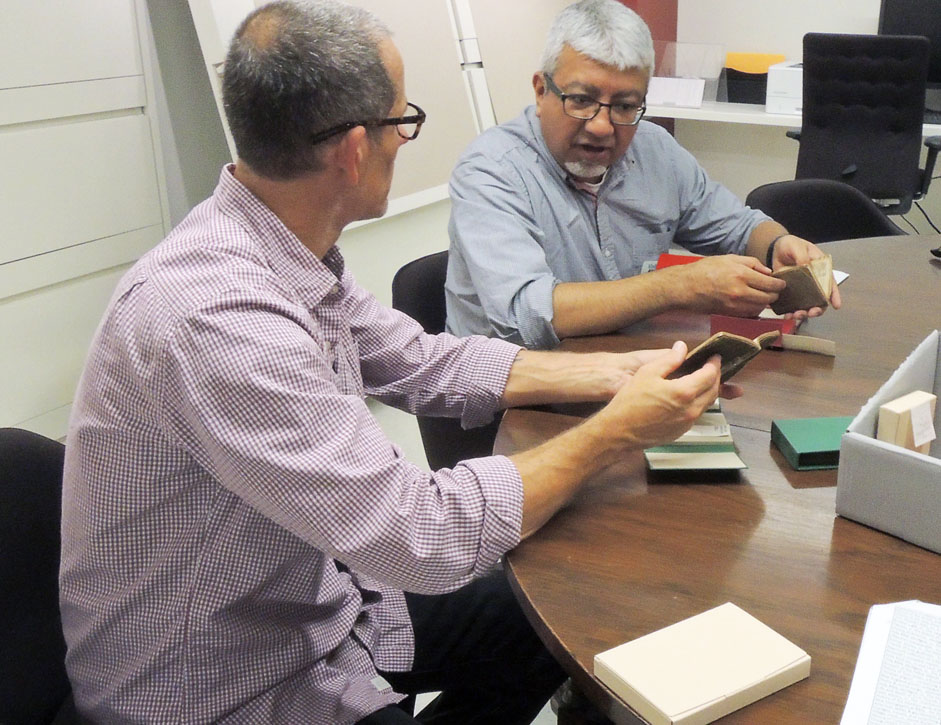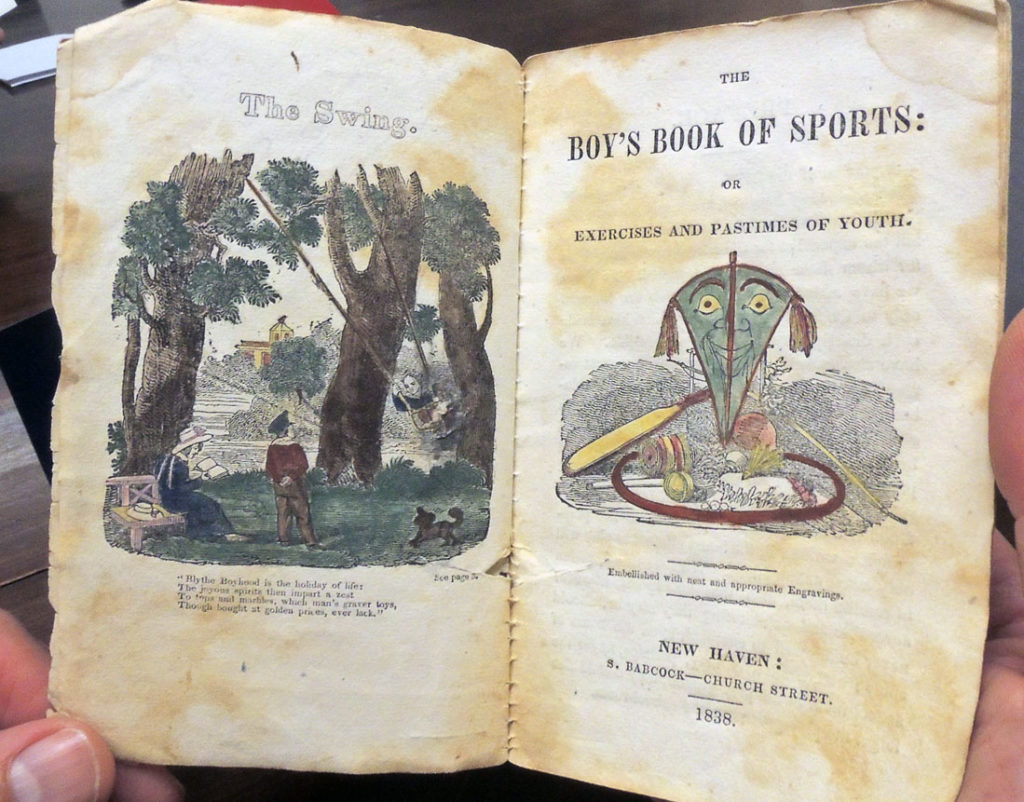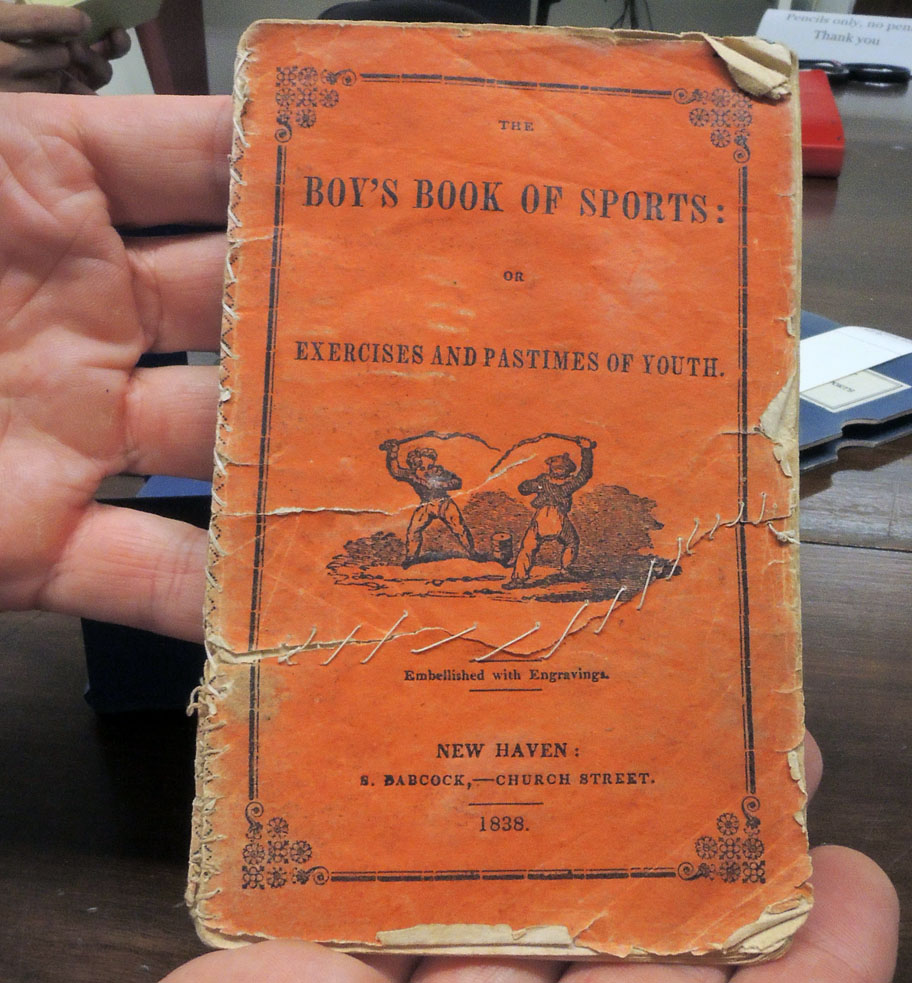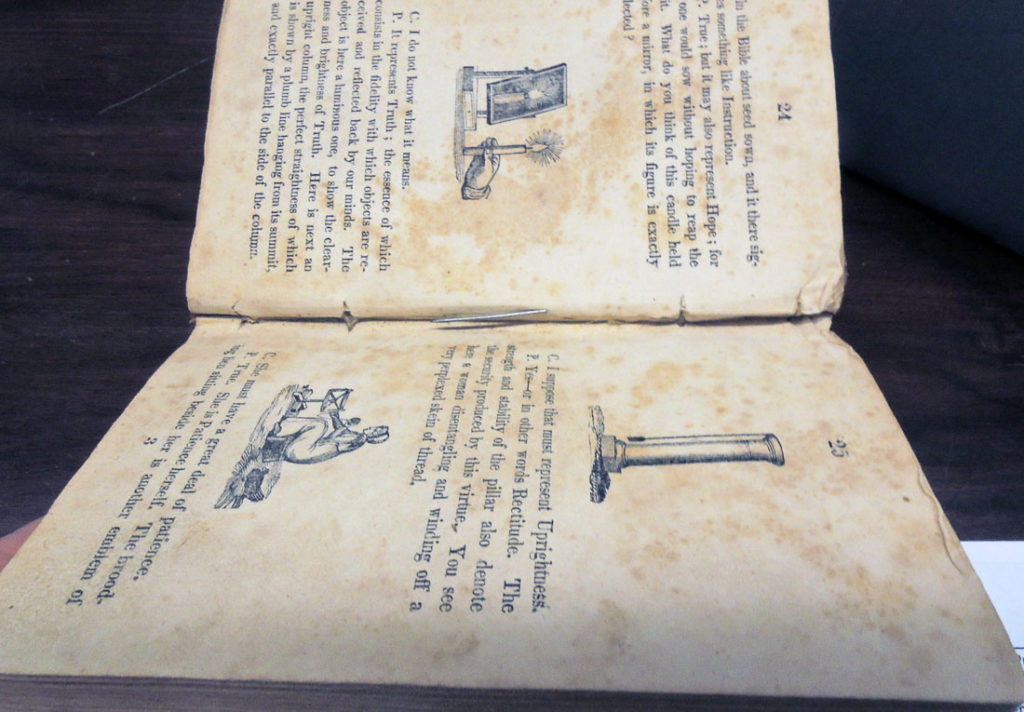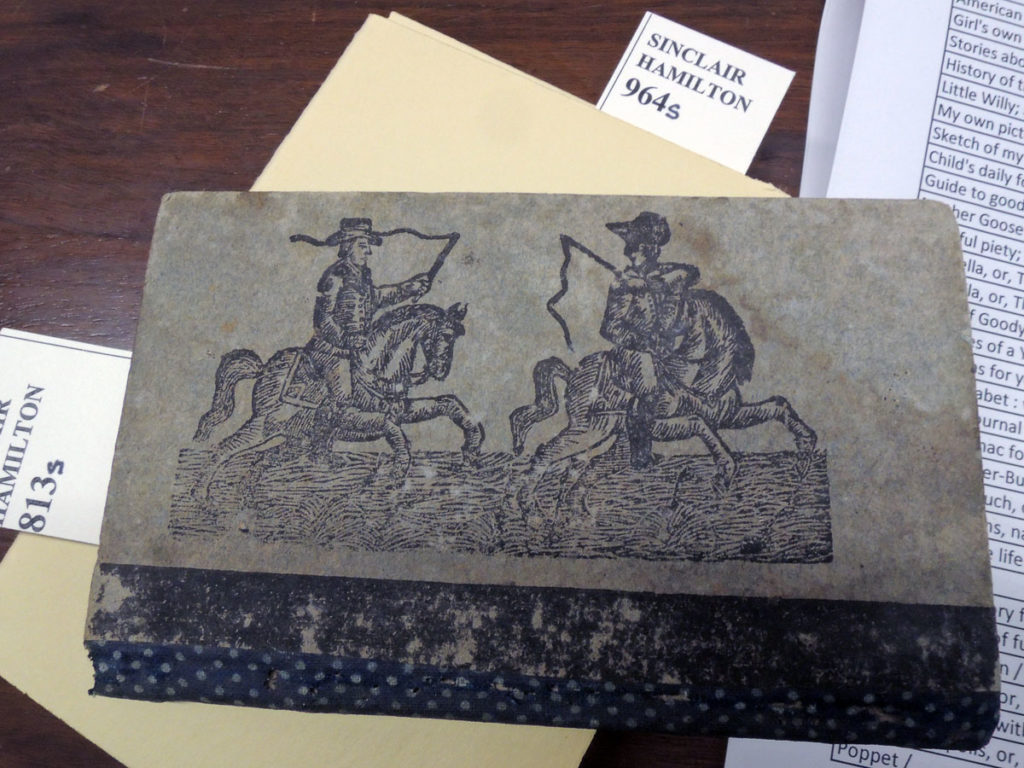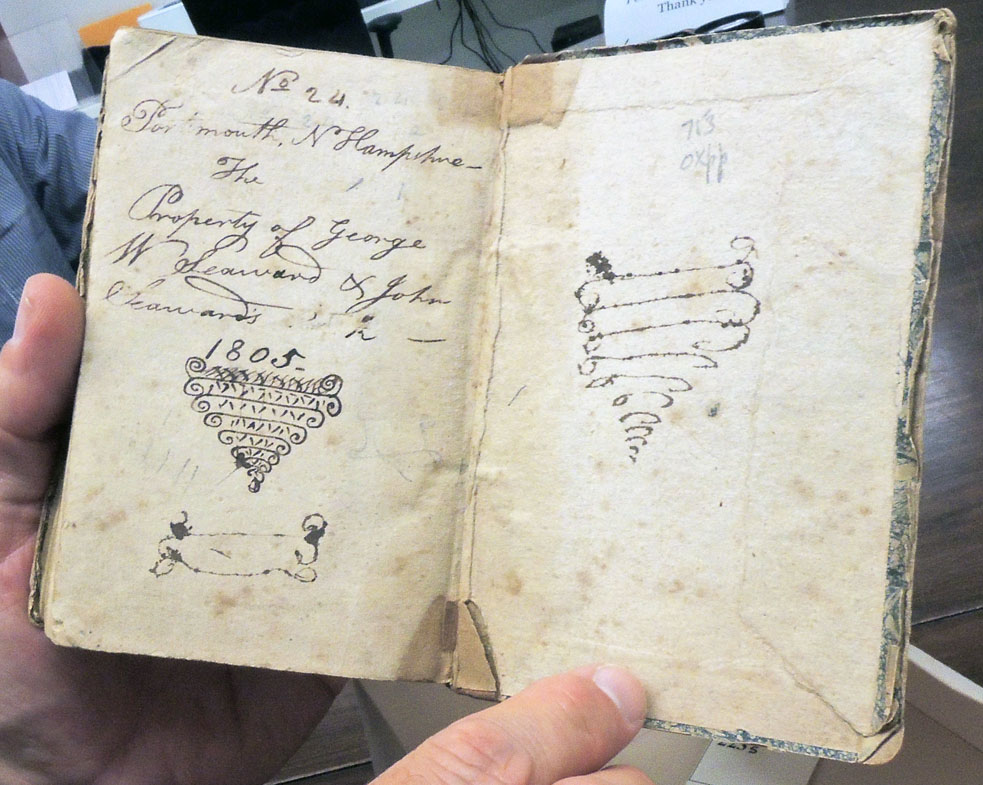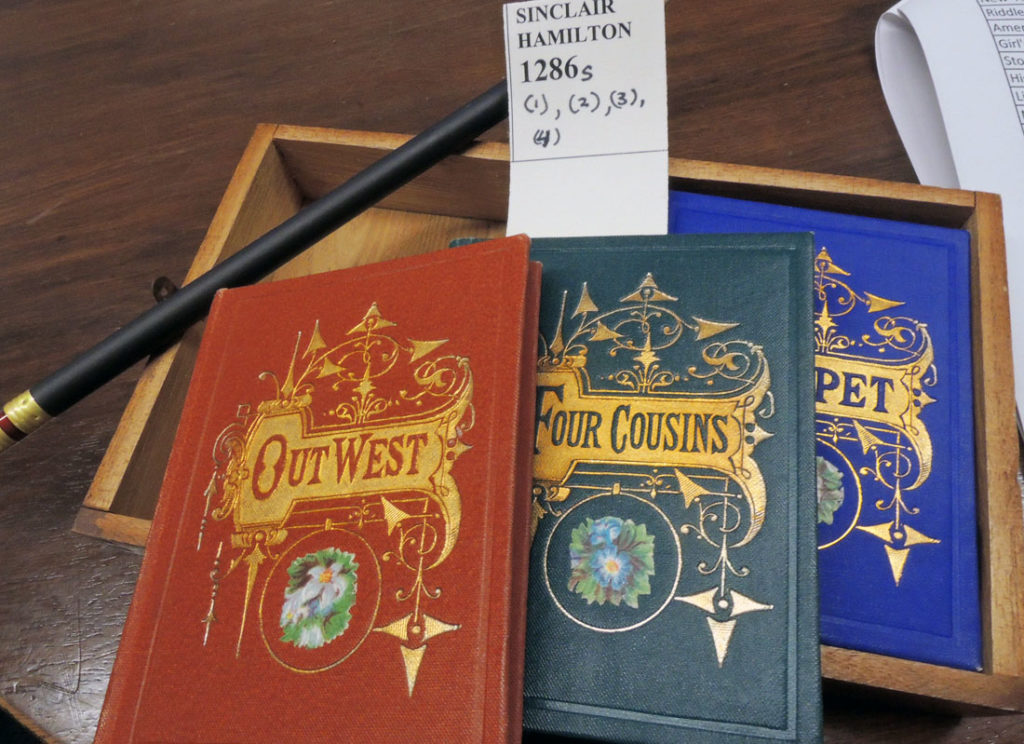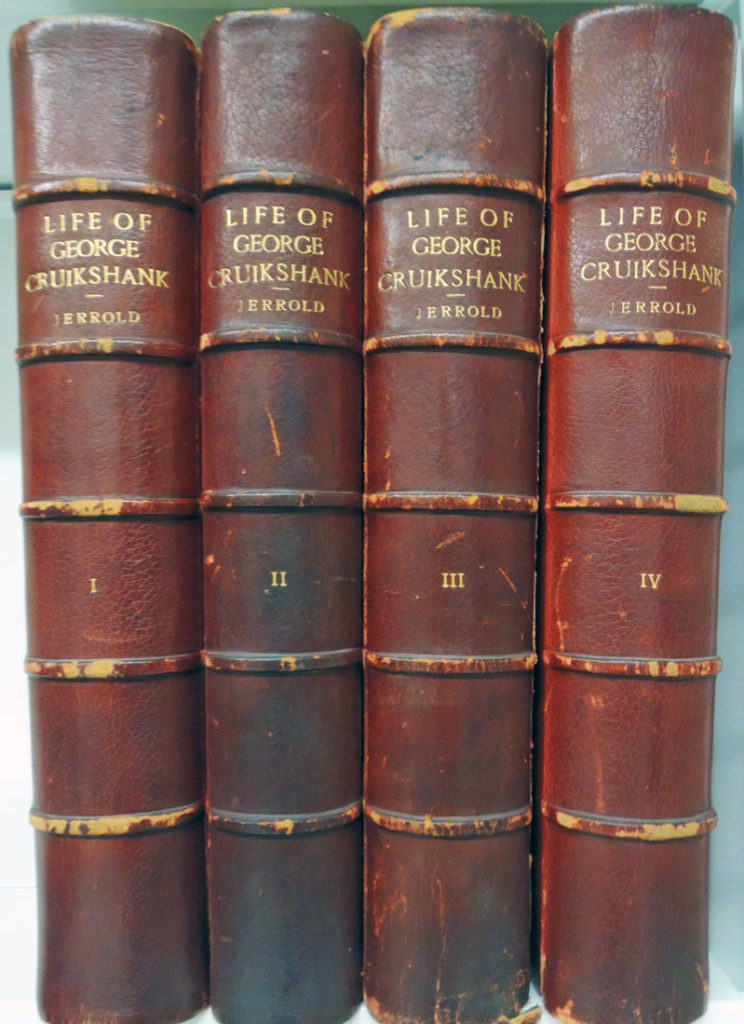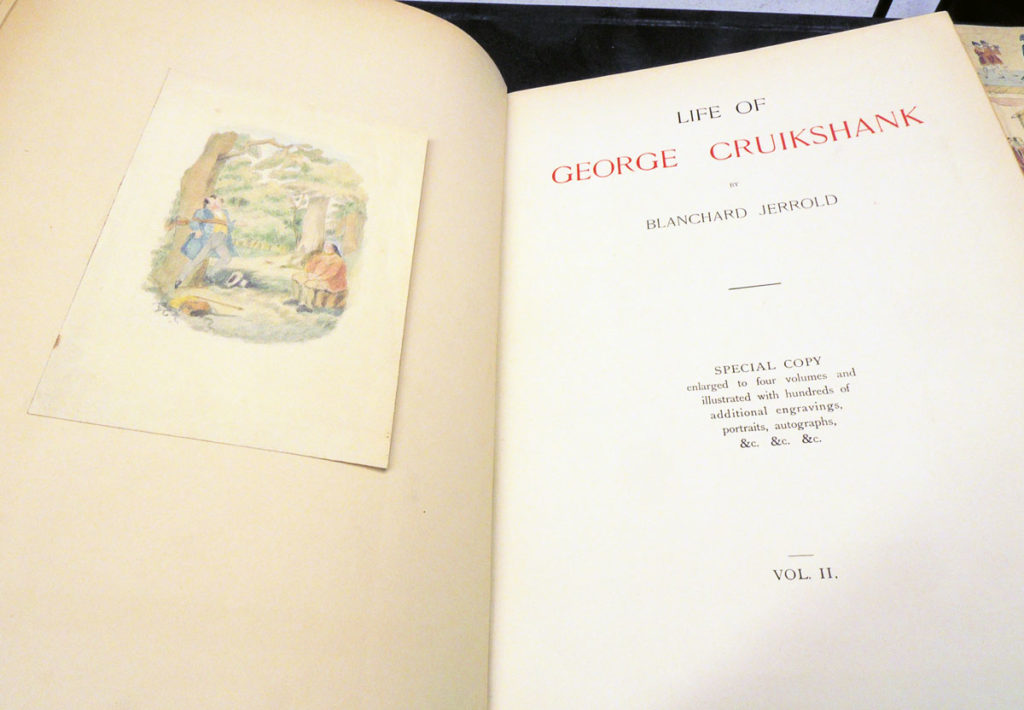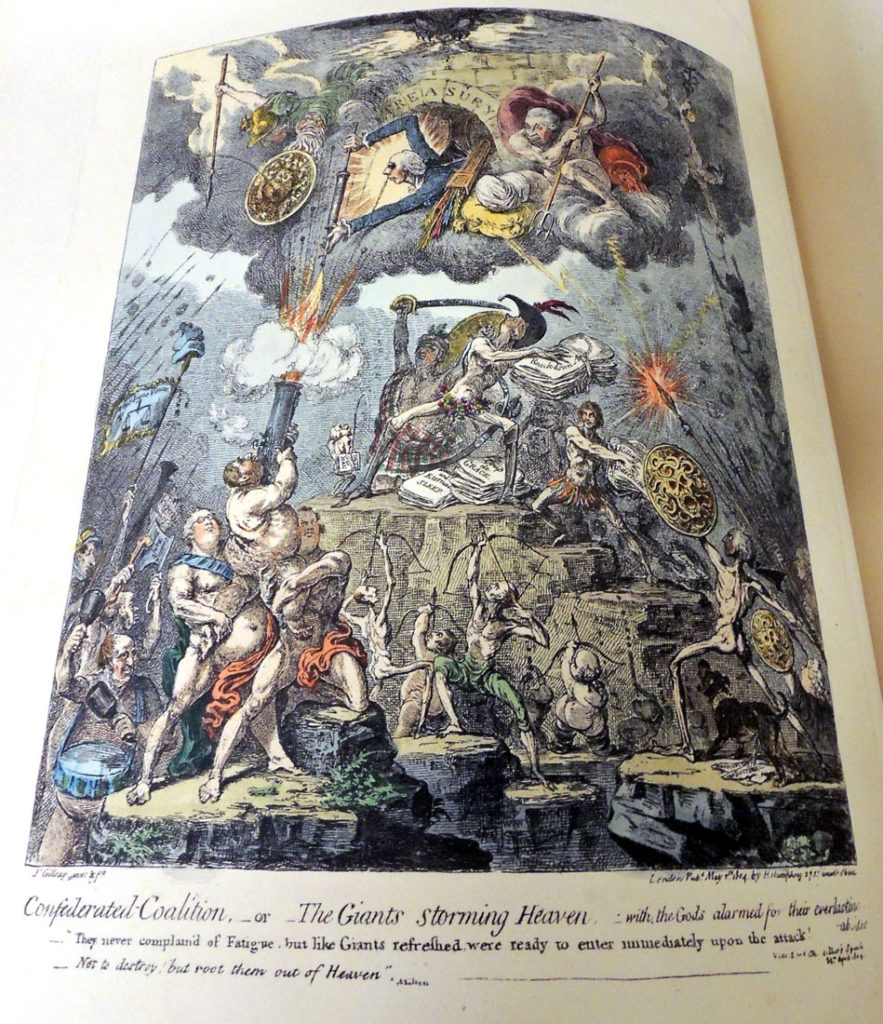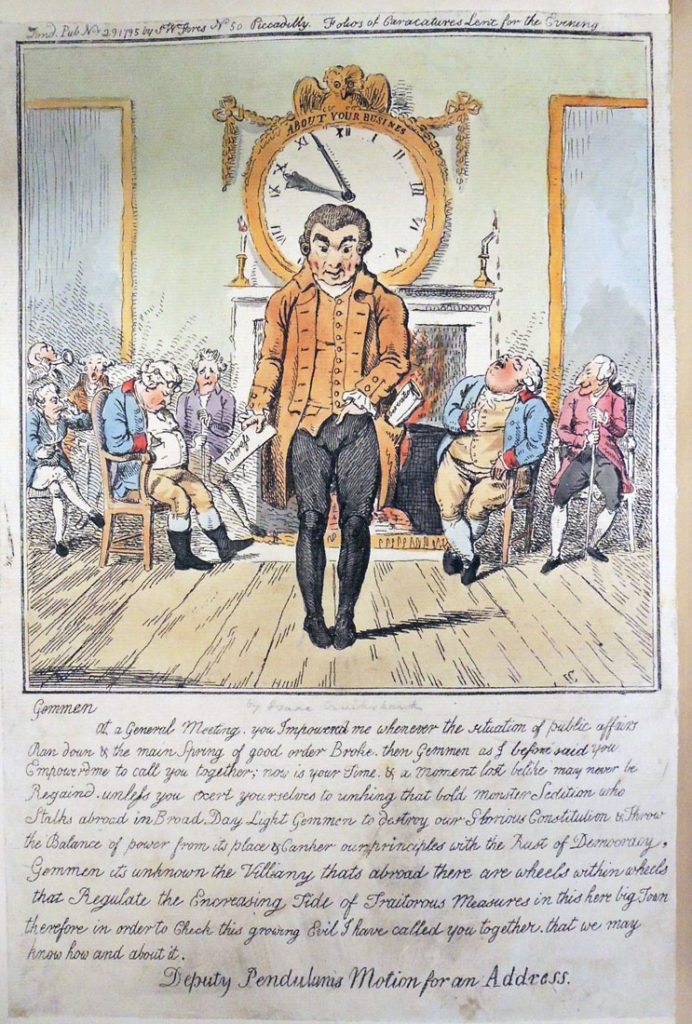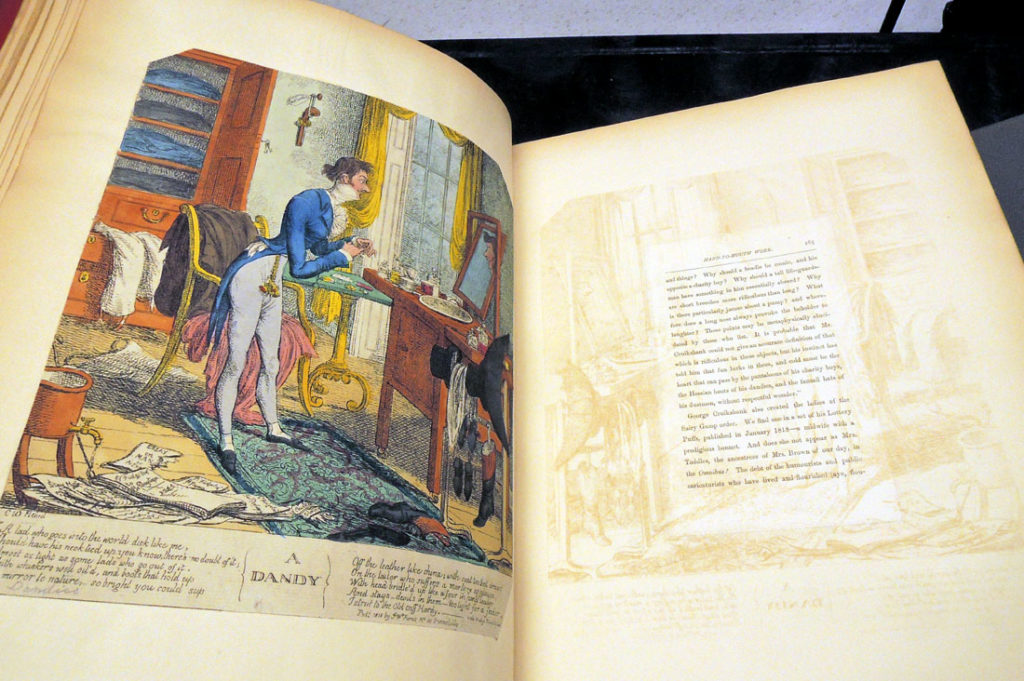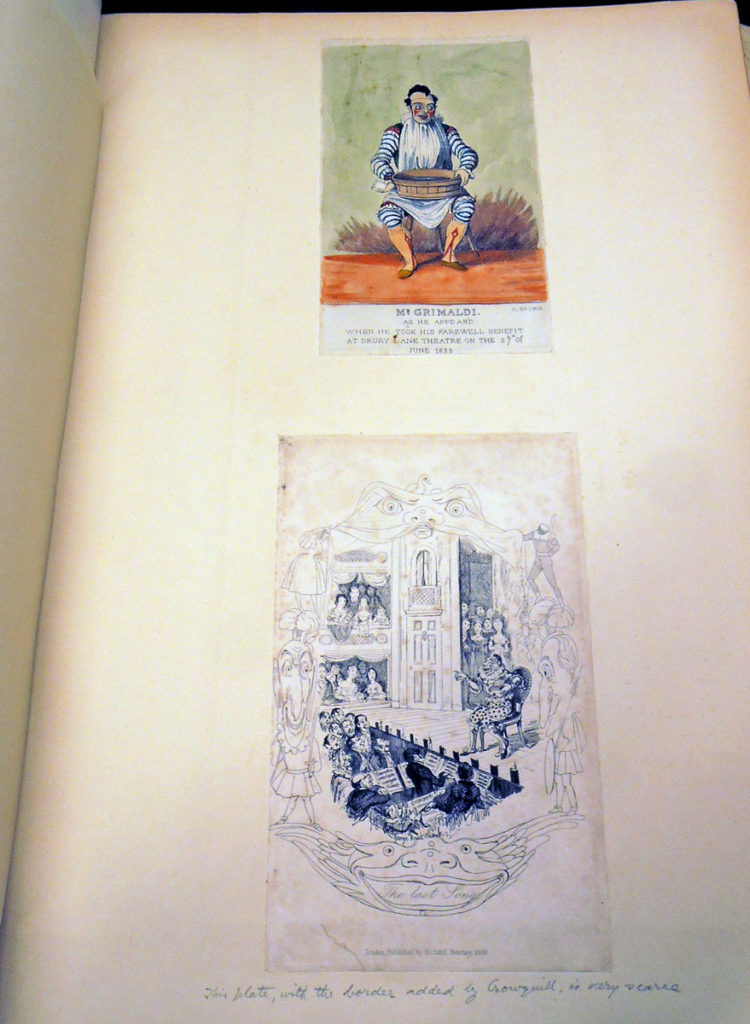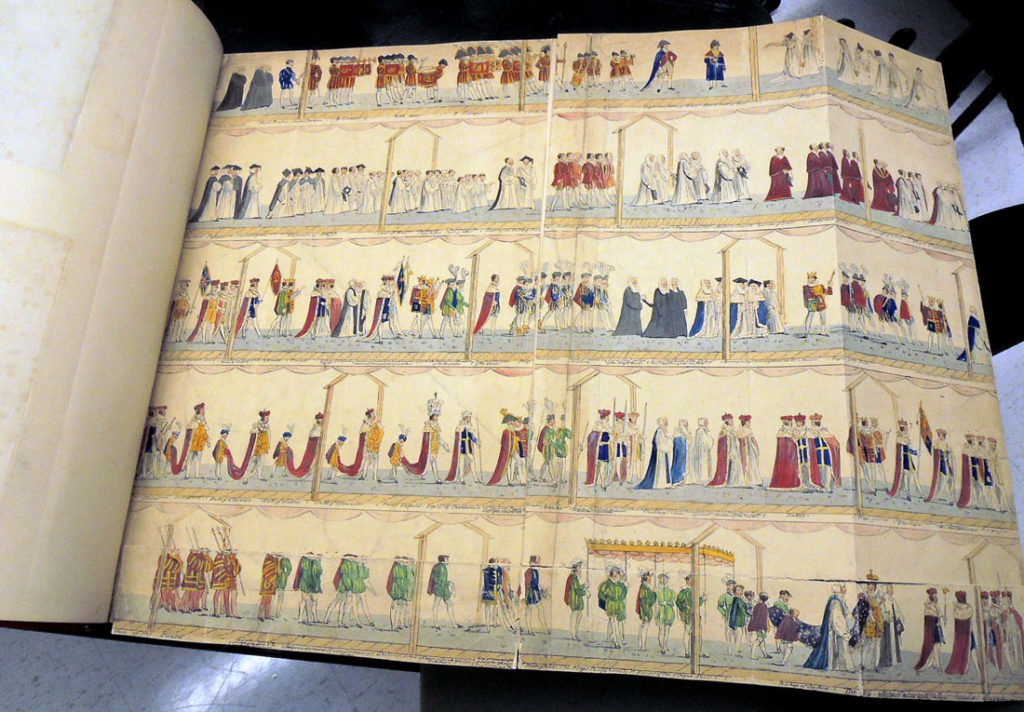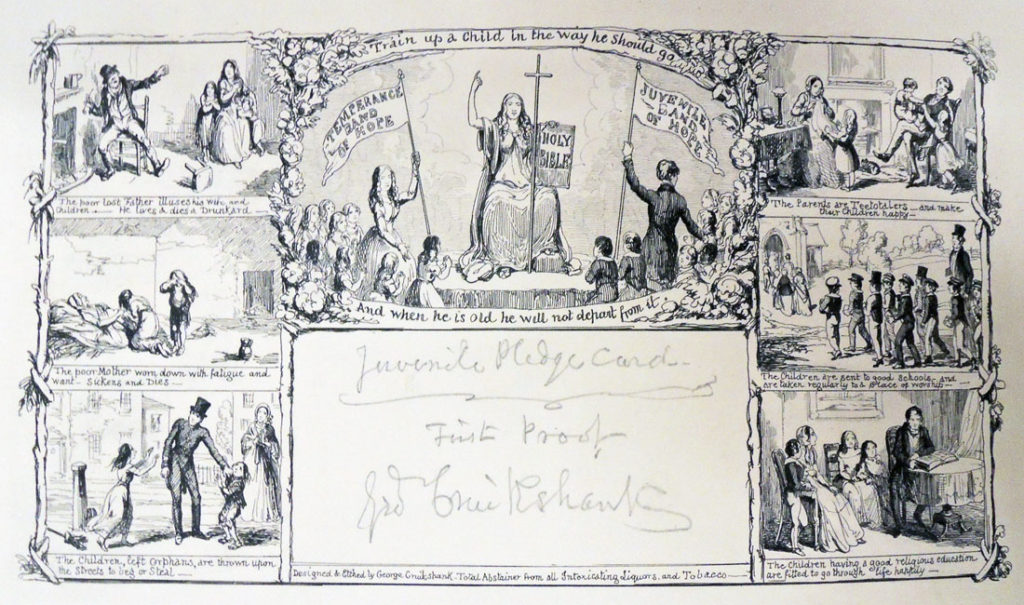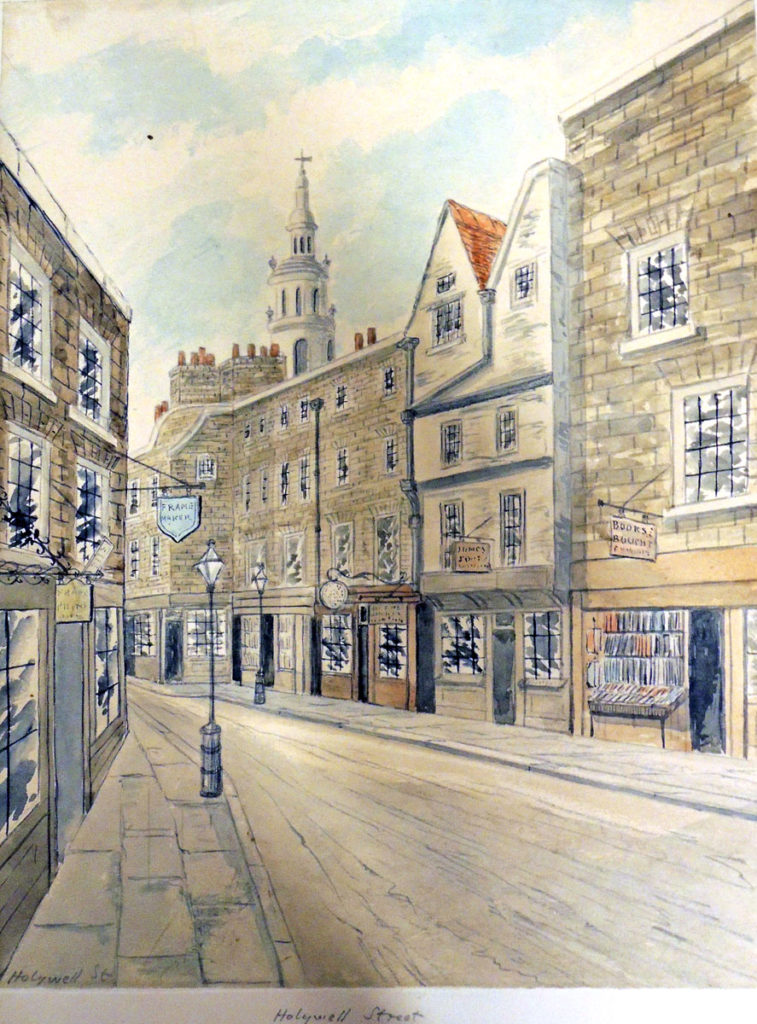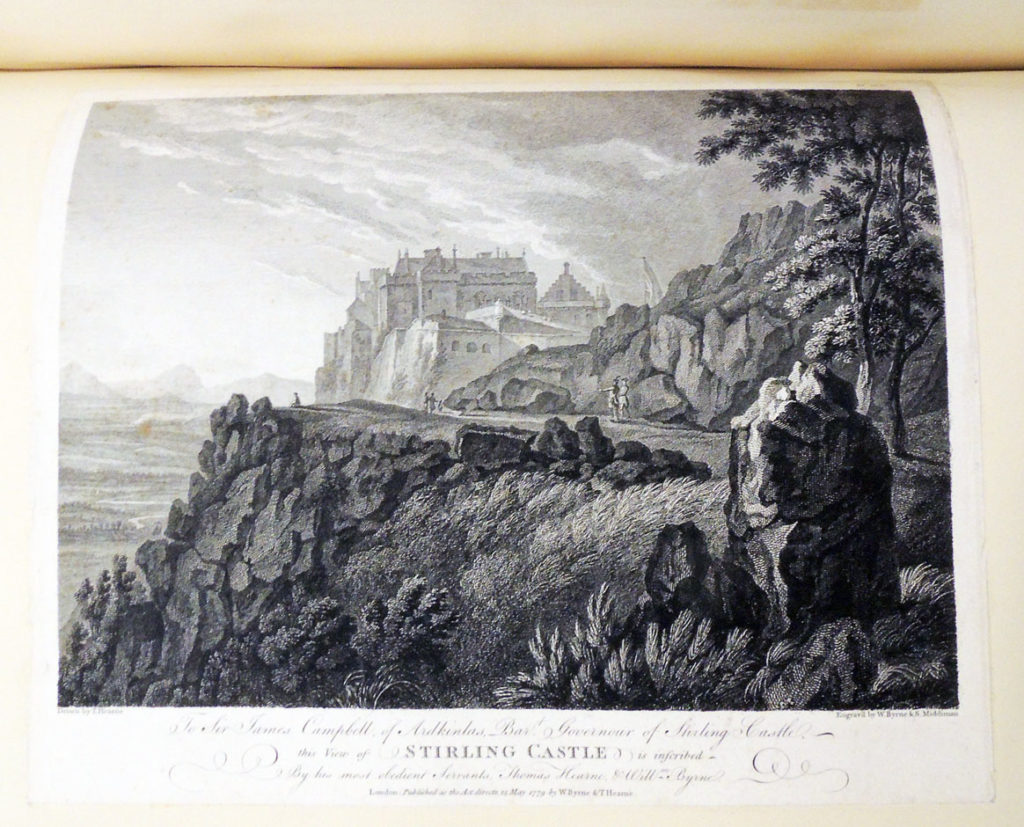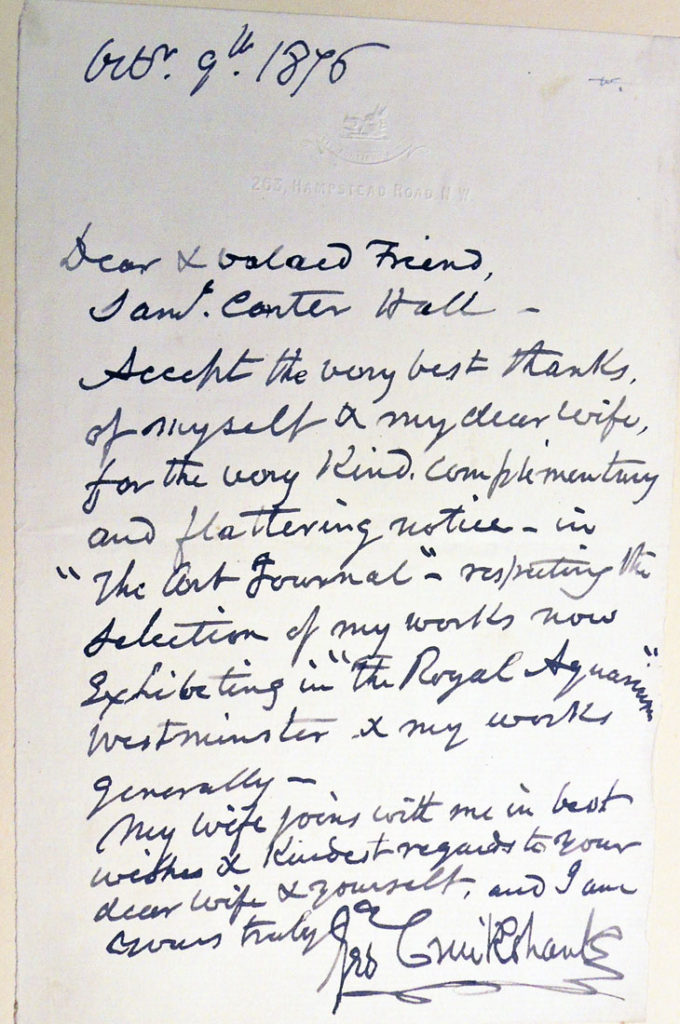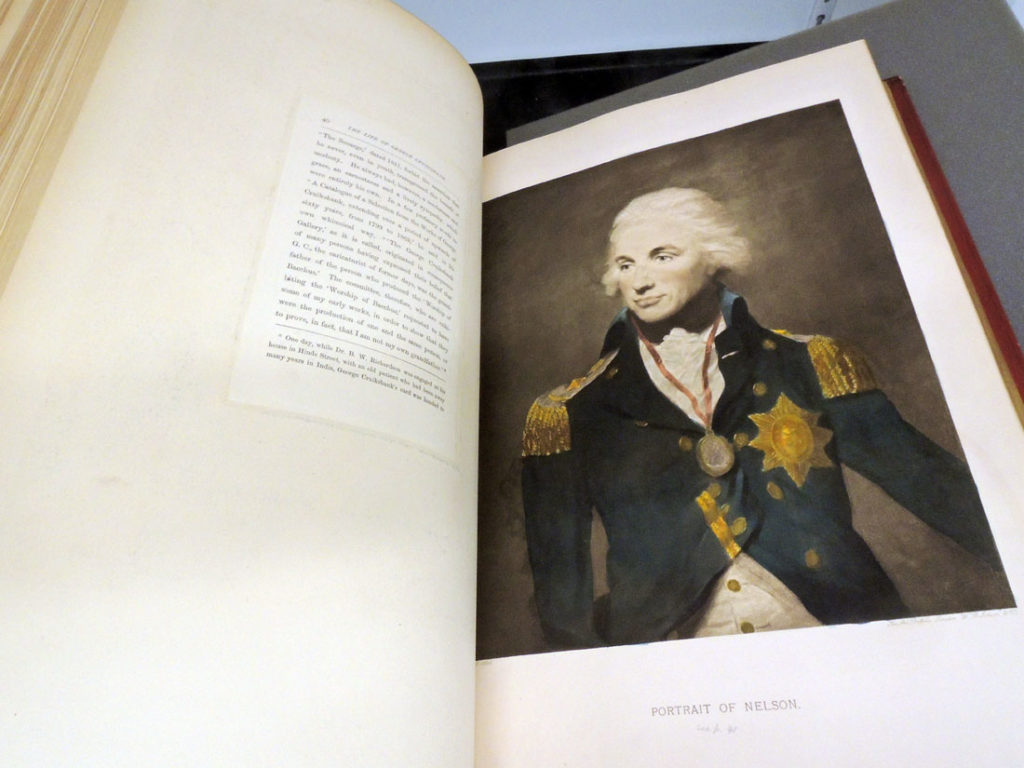The Russian artist emigrated to France after the Russian Revolution and went on to animate films, design sets, and beginning in 1926, illustrate books by Poe, Baudelaire, Andersen, Hoffman, Tolstoy, Pasternak and Malraux, among others.
The chronological list below may not be complete. Titles with an asterisk have only been illustrated with a frontispiece.
Soupault, Philippe, Guillaume Apollinaire (Marseille: Éditions Les Cahiers du Sud, 1926).* – Giraudoux, Jean, La Pharmacienne (Paris: Éditions des Cahiers Libres, 1926). – Giraudoux, Jean, Siegfried et le Limousin (Paris: Aux Aldes, 1927). – Gogol, Nicolai, Le journal d’un fou (Paris: Schiffrin / Éditions de la Pléiade, 1927). Second edition: London, Cress Press Limited, 1929. – Hémon, Louis, Maria Chapdelaine. Récit du Canada Francais (Paris: Éditions du Polygone, 1927. – Maurois, André, Les Anglais (Paris: Cahiers Libres, 1927).* – Maurois, André, Voyage au pays des Articoles (Paris: Schiffrin / Éditions de la Pléiade, 1927). – Genbach, Jean, L’Abbé de l’abbaye, poèmes supernaturalistes. (Paris: Tour d’ivoire, 1927). – Soupault, Philippe, Guillaume Apollinaire, ou Reflets de l’incendie (Marseille: Les Cahiers du Sud, 1927).* – Morand, Paul, Bouddha Vivant (Paris: Aux Aldes / Grasset, 1928). – Pouchkine, Alexandre, La dame de pique (Paris: J. E. Pouterman Éditeur, 1928). Second edition: London, the Blackmore Press, 1928. – Kessel, Joseph, Les Nuits de Sibérie (Paris: Flammarion 1928). – Perrault, Charles, Contes (Paris: Hilsum 1928).* – Green, Julien, Mont Cinère (Paris: Plon, 1928).* – Apollianaire, Guillaume, Les épingles (Paris: Cahiers Libres, 1928).* – Soupault, Philippe, Le roi de la vie (Paris: Cahiers Libres, 1928).* – Bove, Emmanuel, Une Fugue (Paris: Éditions de la belle Page, 1928).* – Green, Julien, Adrienne Mesurat (Paris: Les Exemplaires, 1929). – Perrault, C., Les Contes de Perrault. Édition du Tricentenaire. Illustrés par 33 graveurs (Paris: Éditions Au Sans Pareil, 1928). – Giraudoux, Jean, Marche vers Clermont (Paris: Cahiers Libres, 1928).* – Poe, Edgar Allan, Fall of the House of Usher (Paris: Éditions Orion, 1929). Second edition: Maastricht, Stols, 1930. – Dostoevsky, Fyodor, Les frères Karamazov (Paris: la Pléiade / Schiffrin, 1929). – Kessel, Joseph, Dames de Californie (Paris : NRF, 1929).* – Poe, Edgar Allan, translated by Baudelaire, Colloque entre Monos et Una (Paris: Orion, 1929). – Delteil, Joseph, On the River Amour (New York: Covici, 1929). – Pushkin, Aleksandr Sergeevich, Les recites de feu Ivan Pétrovitch Bielkine (Maastricht/Bruxelles: Stols 1930). – Fargue, L.-P., Poèmes (Paris: NRF Gallimard, 1931). – Fournier, Alain, Le Grand Meaulnes (Paris: Éditions de Cluny, 1931).* – [?] Louys, Pierre, Les Chansons de Bilitis (Paris: Cluny, 1933). – Baudelaire, Charles, Petits poèmes en Prose (Paris: Société du Livre d’Art, 1934). – Cervantès, Don Quichote, 1936. Published without text by ArtExEast, Geneva, 2011. – Andersen, Hans Christian: Images de la Lune (Paris: Maximilien Vox, 1942). – Afanas’ev, Aleksandr, Russian Fairy Tales (New York: Pantheon Books, 1945). – Soupault, Philippe: Journal d’un Fantôme (Paris: Éditions du Point du Jour, 1946).* – Tolstoy, Leo, What Men Live by: Russian stories and Legends (York: Pantheon Books, 1943). – Soupault, Philippe, Message de l’île déserte (Den Haag: Stols, 1947).* – Blake, William, Chants d’innocence et d’expérience (Paris: Cahiers Libres, 1947).* – Soupault, Philippe (transl.), Chant du Prince Igor (Rolle: Eynard, 1950). – Chekov, Anton, Une Banale Histore, suivie de: La Steppe – Goûssev – Vollôdia (Paris Imprimerie Nationale / André Sauret, 1955).* – Flaubert, Gustave, Premières Lettres à L.C. (Paris: Les Impénitents, 1957).* – Pasternak, Boris, Dr Zhivago (Paris: Gallimard, 1959). Second edition by Pantheon Books. – Hoffmann, Ernst Theodore Amadeus, Contes (Paris: Club du Livre, 1960). – Dostoevsky, Fyodor, The Gambler & Notes from the Underground (New York: Heritage Press / Limited Editions Club / Sign of the Stone Book, 1967). – Malraux, André, Oeuvres (Paris: Rombaldi, 1979). – Malraux, André, La Tentation de l’Occident (Paris: Ateliers Rigal, 1991). – Malraux, André, La Condition Humain, (Paris: Ateliers Rigal, 1991). – Malraux, André, La Voie Royale (Paris: Ateliers Rigal, 1991). – Malraux, André, Les Noyés de l’Altenbourg (Paris: Ateliers Rigal, 1991). – Tolstoy, Leo, Anna Karenina (Paris: Rigal, 1995 / Librairie Nicaise, 1997). – Alexeïeff, Alexandre, Album de 120 eaux-fortes et Aquatintes de A. Alexeïeff (Paris: Ateliers Rigal-Bertansetti, 1997).
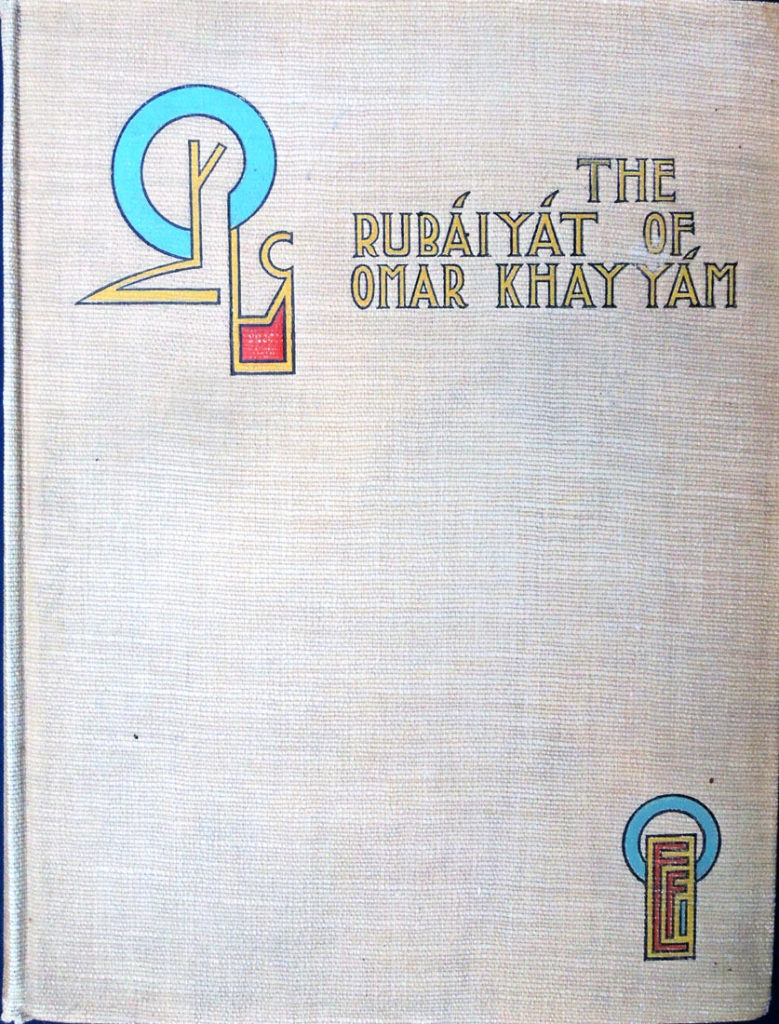
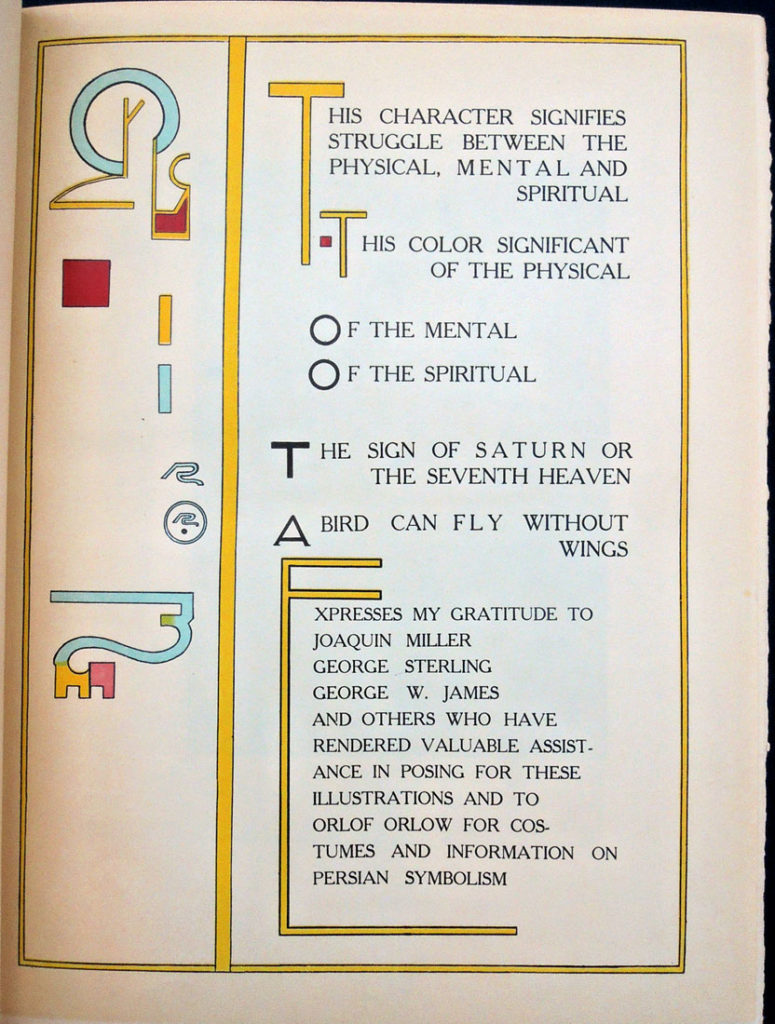 Hanscom not only took the photographs but also drew the borders. This edition was first announced in the column “Books and Authors” in the New-York Tribune on August 26, 1905:
Hanscom not only took the photographs but also drew the borders. This edition was first announced in the column “Books and Authors” in the New-York Tribune on August 26, 1905: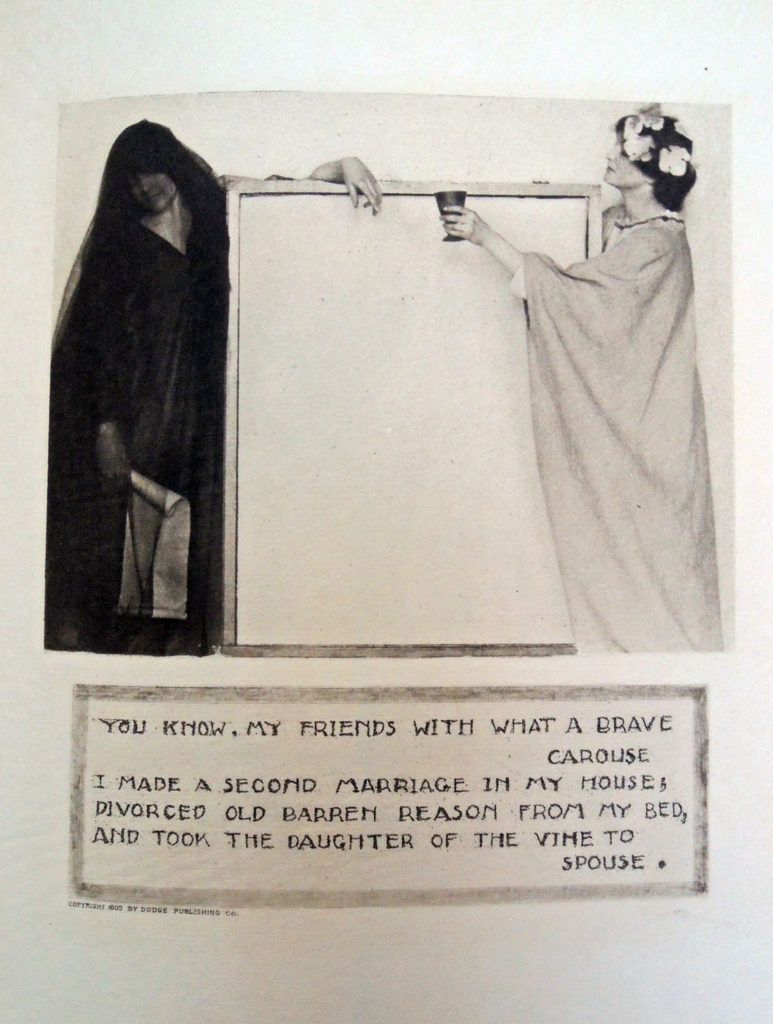 Omar Khayyam. The Rubáiyát of Omar Khayyám, translated into English verse by Edward FitzGerald; with illustrations by Adelaide Hanscom (New York: Dodge Publishing Company, 1905). “… my gratitude to Joaquin Miller, George Sterling, George W. James, and others who have rendered valuable assistance in posing for these illustrations …” Graphic Arts Collection (GAX) 2003-1063N
Omar Khayyam. The Rubáiyát of Omar Khayyám, translated into English verse by Edward FitzGerald; with illustrations by Adelaide Hanscom (New York: Dodge Publishing Company, 1905). “… my gratitude to Joaquin Miller, George Sterling, George W. James, and others who have rendered valuable assistance in posing for these illustrations …” Graphic Arts Collection (GAX) 2003-1063N
